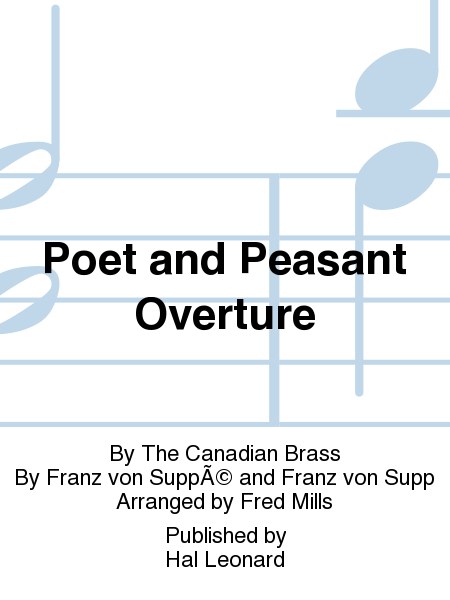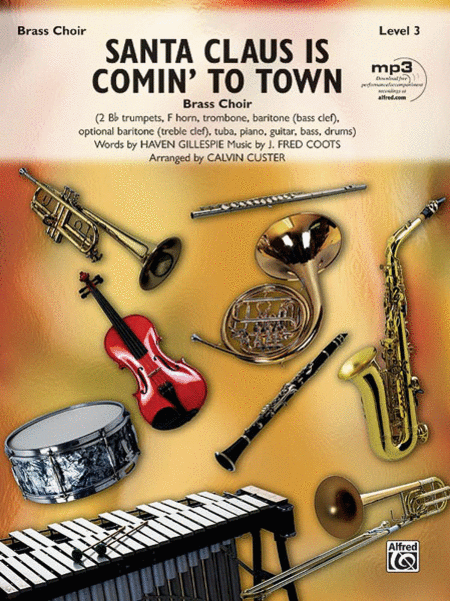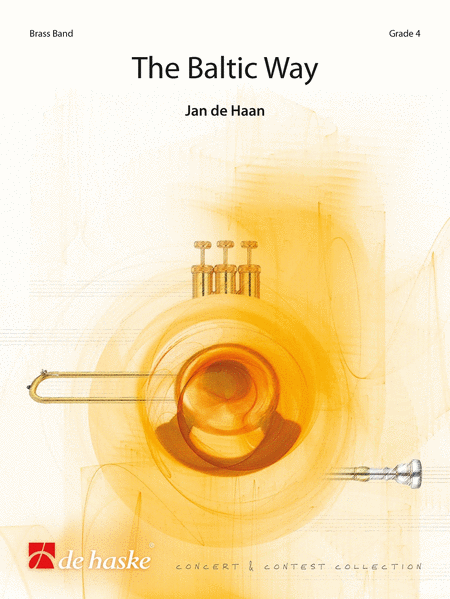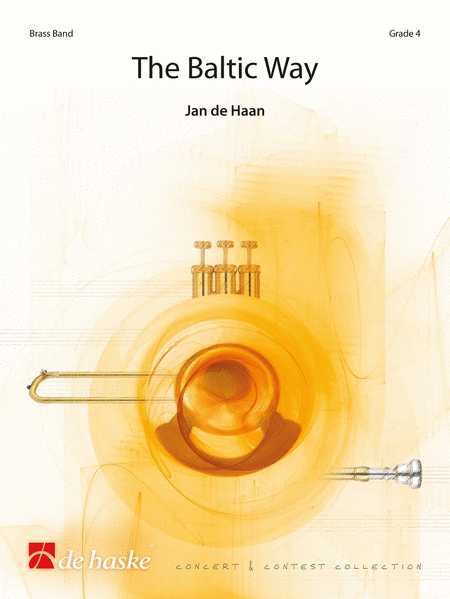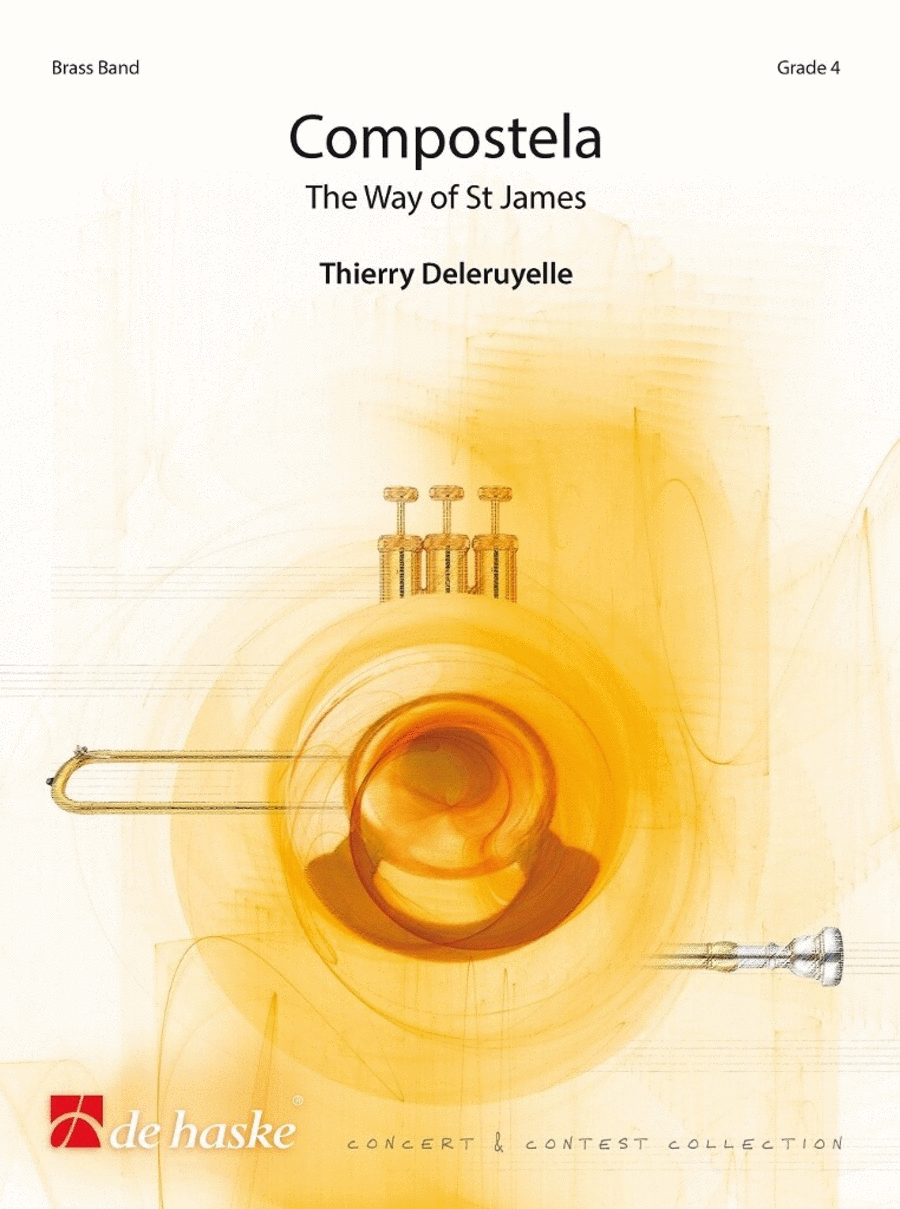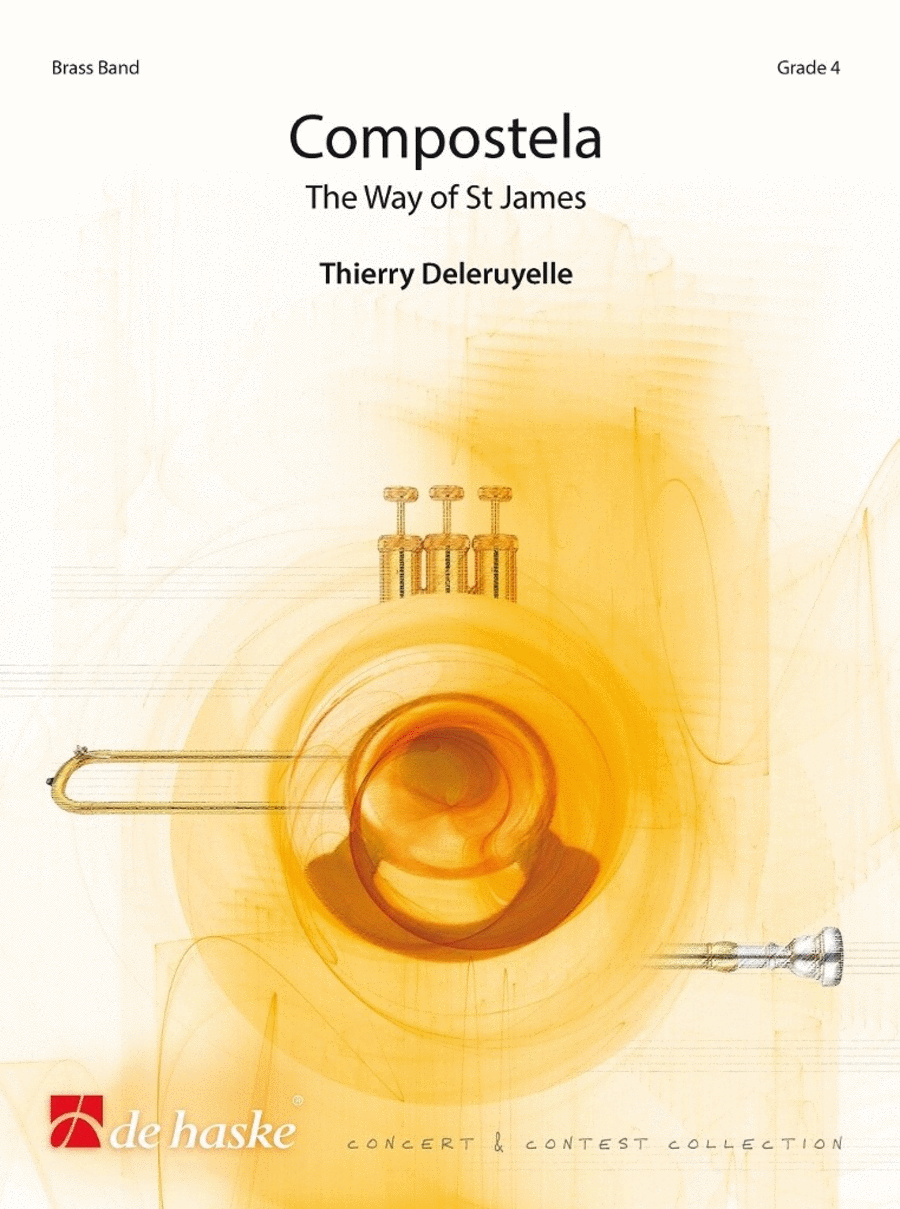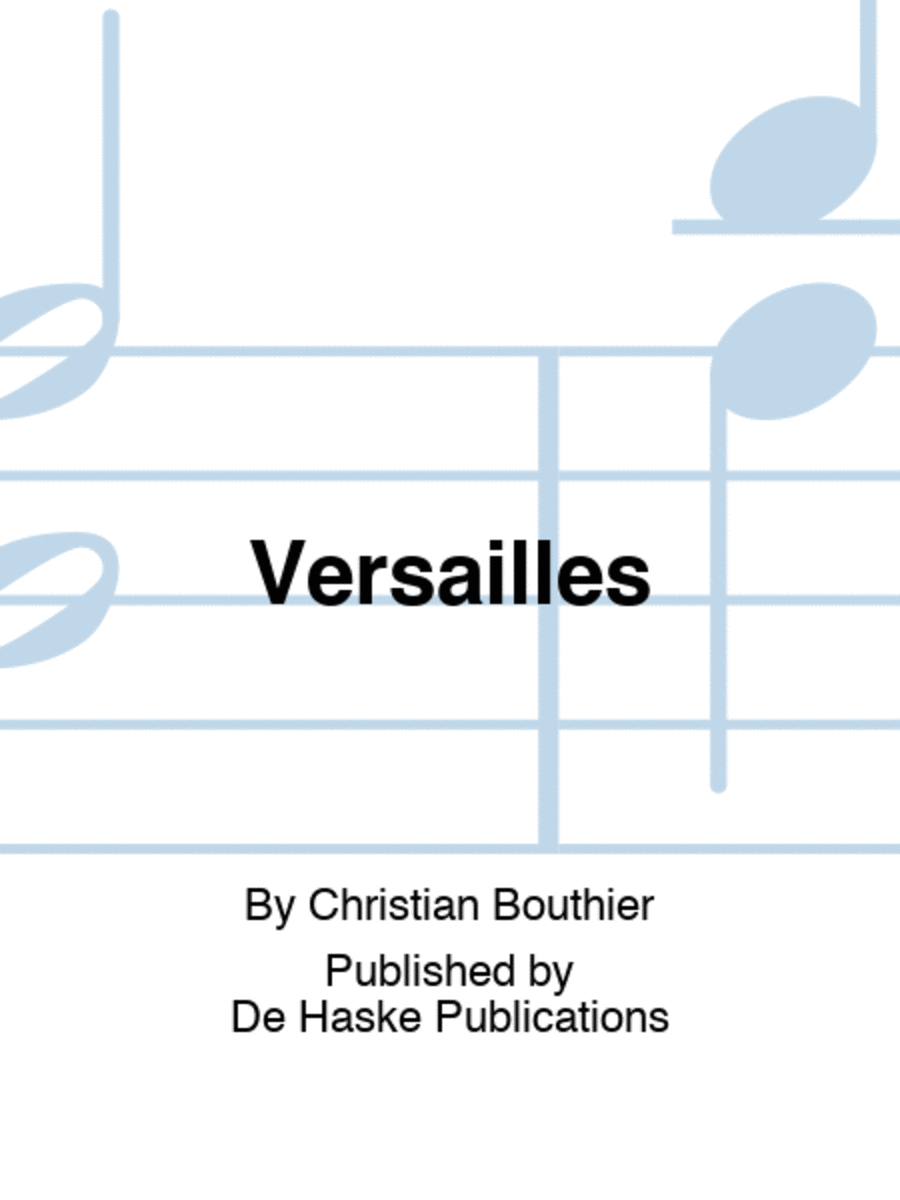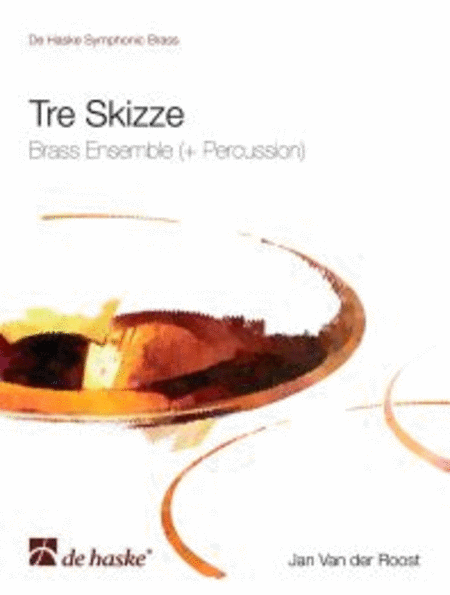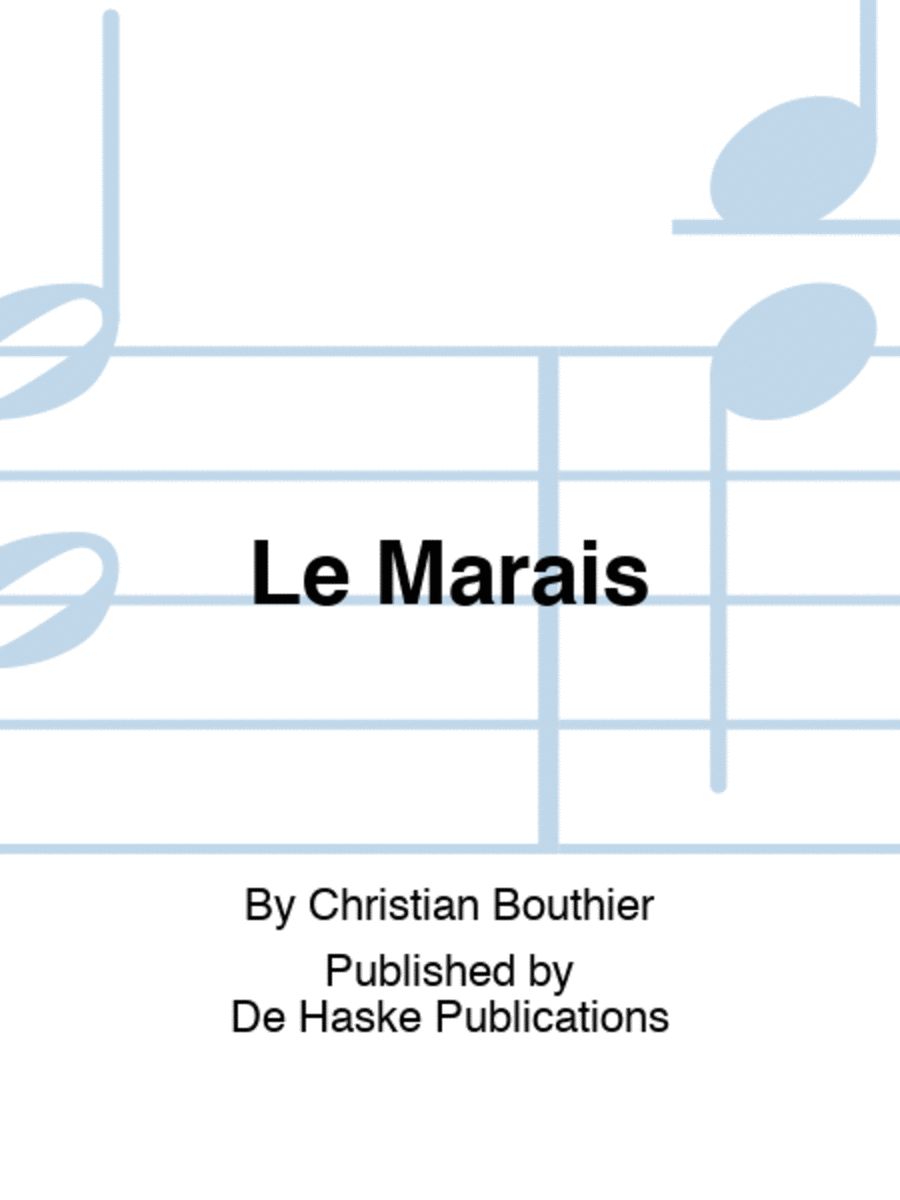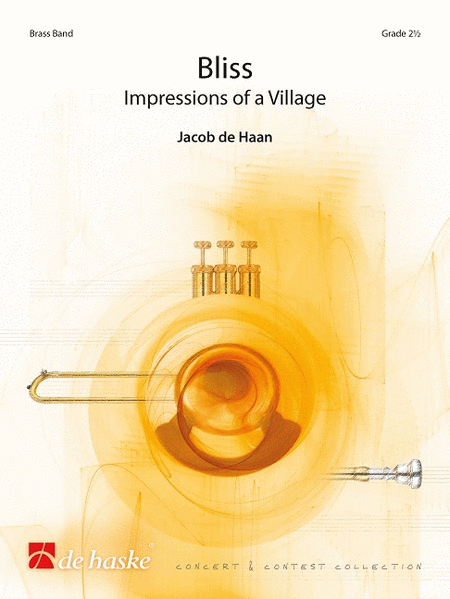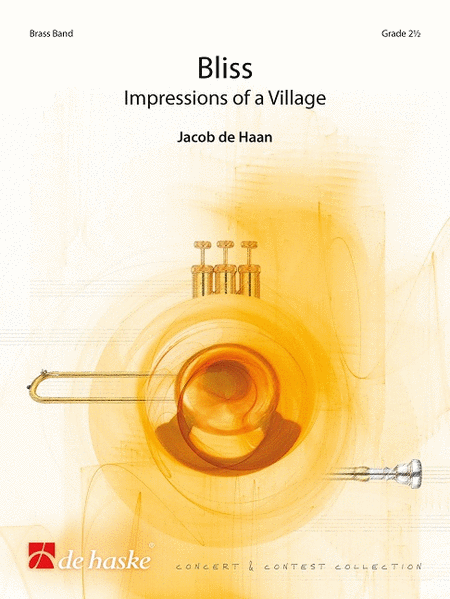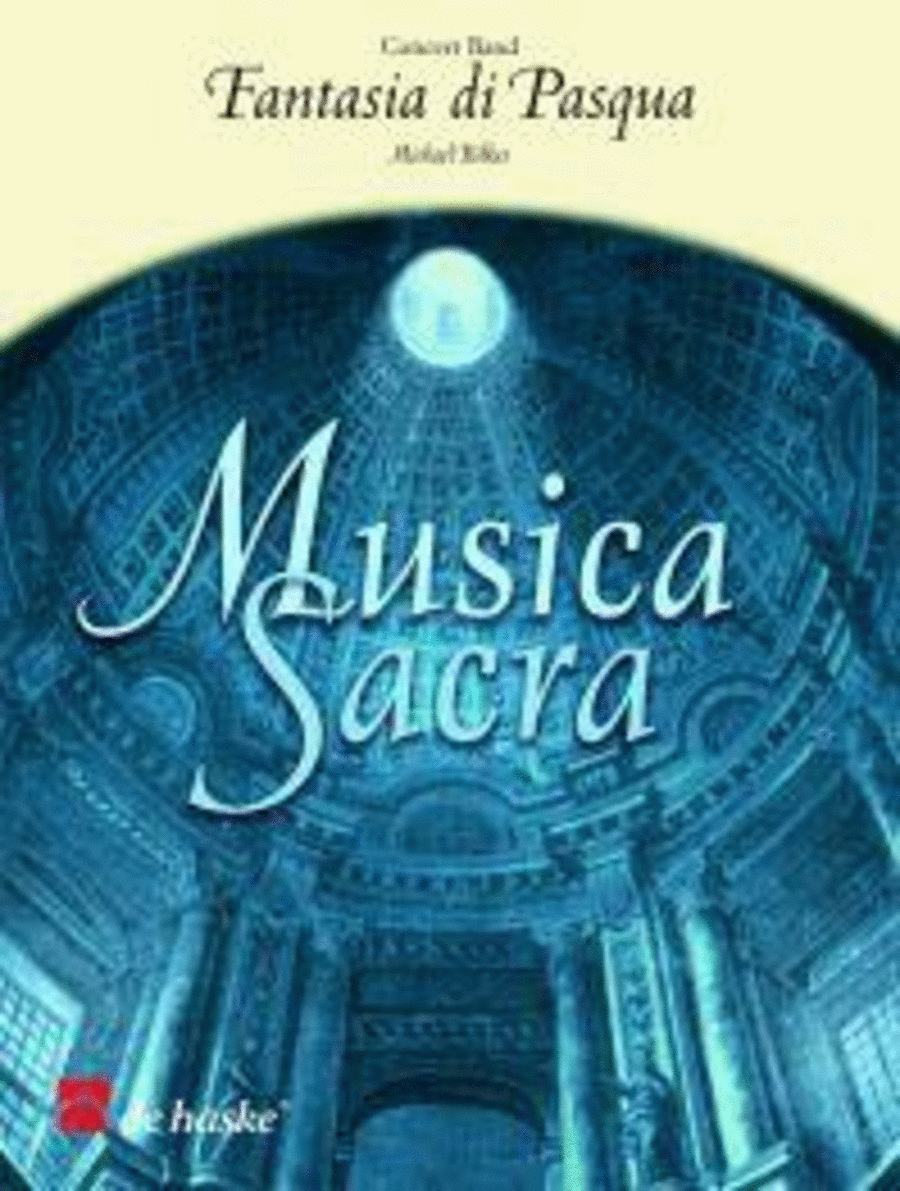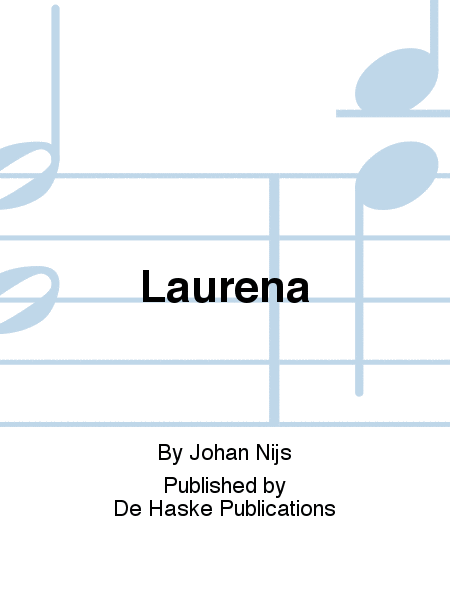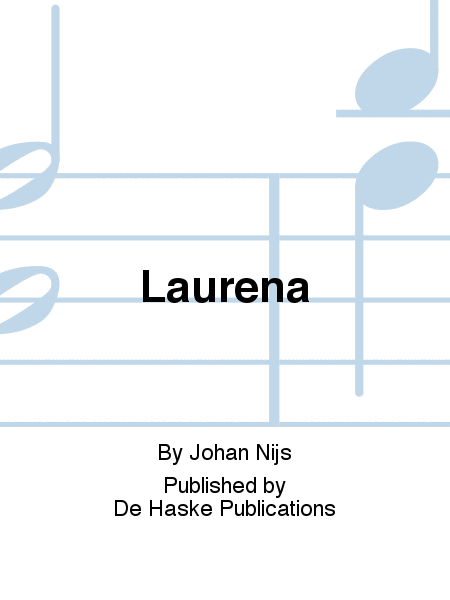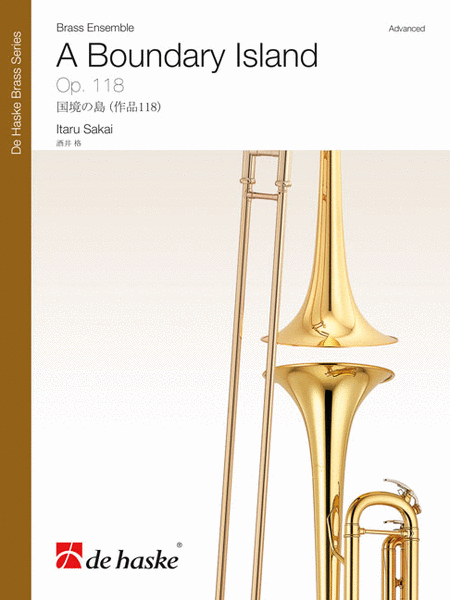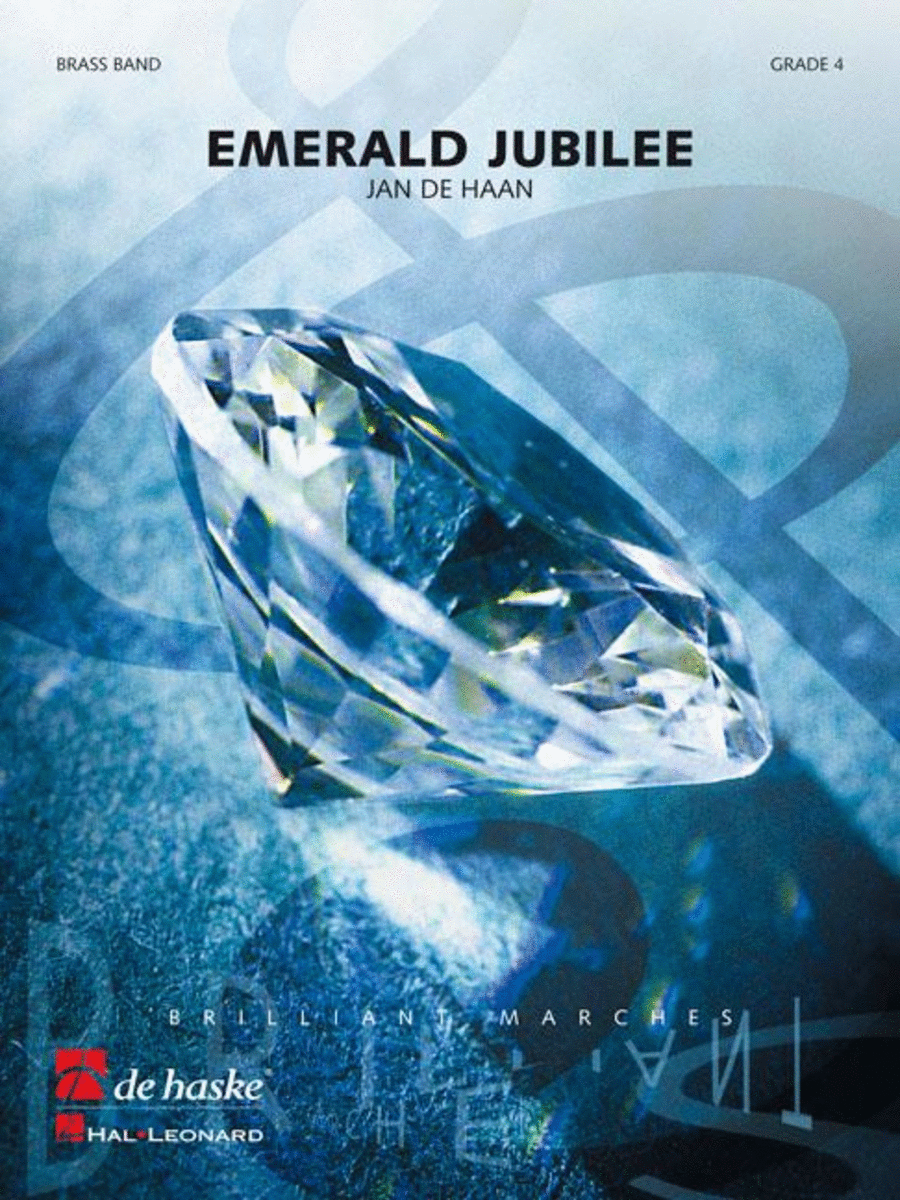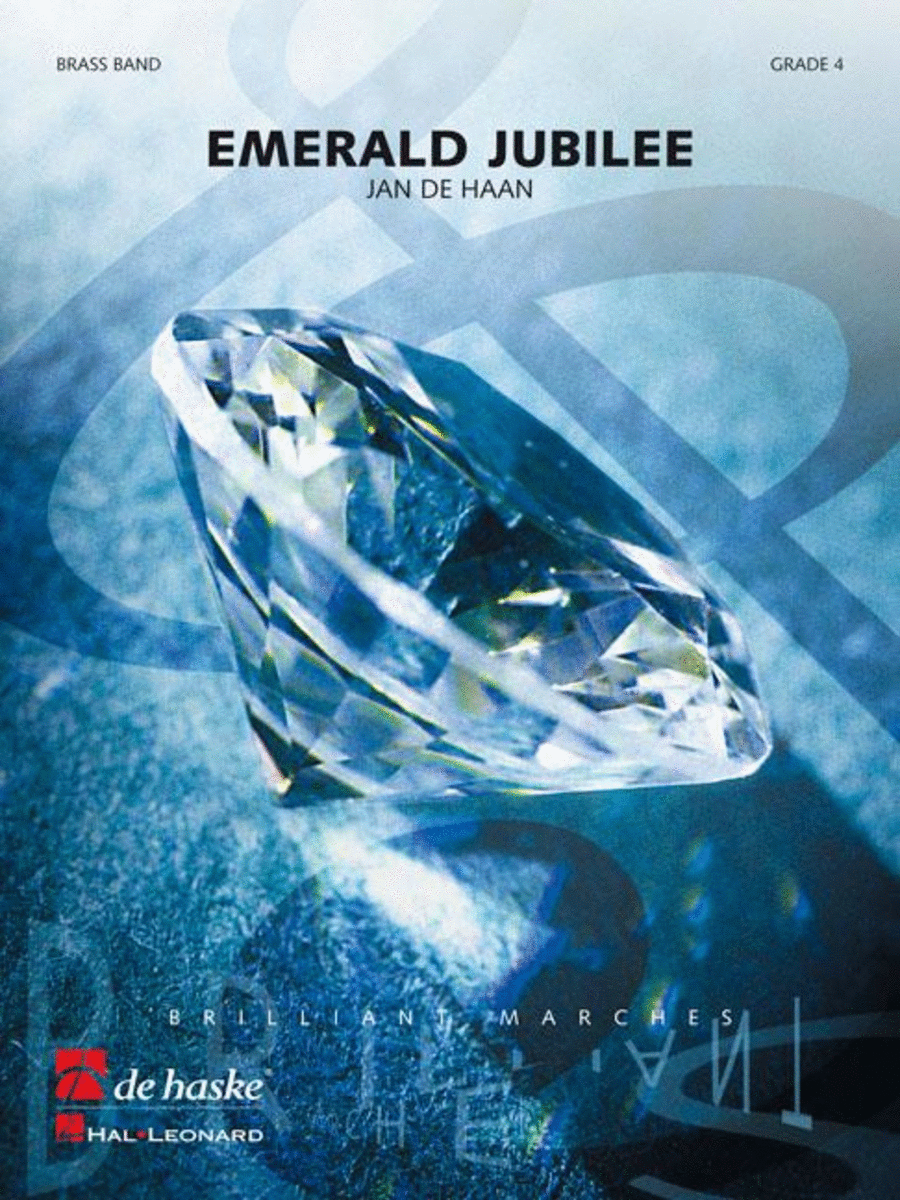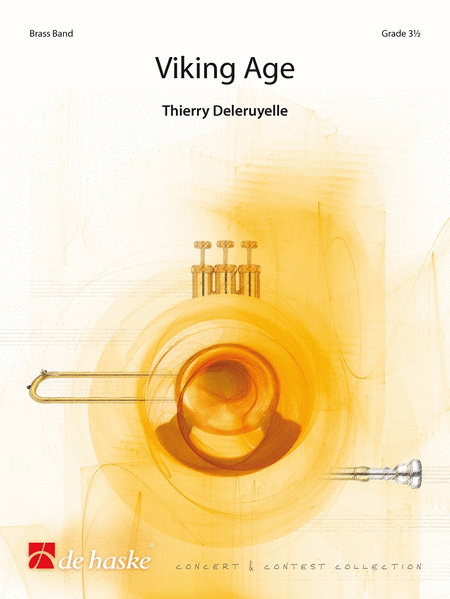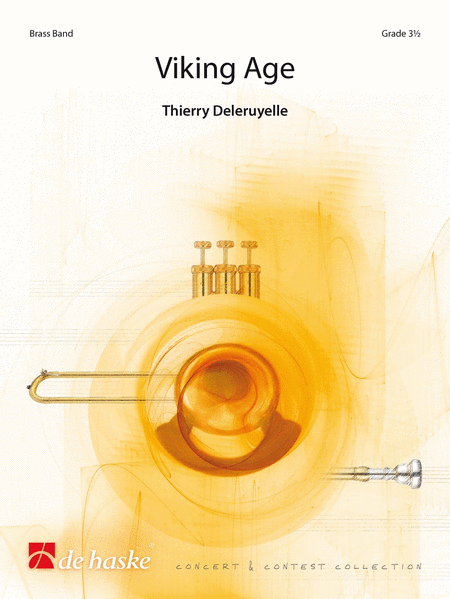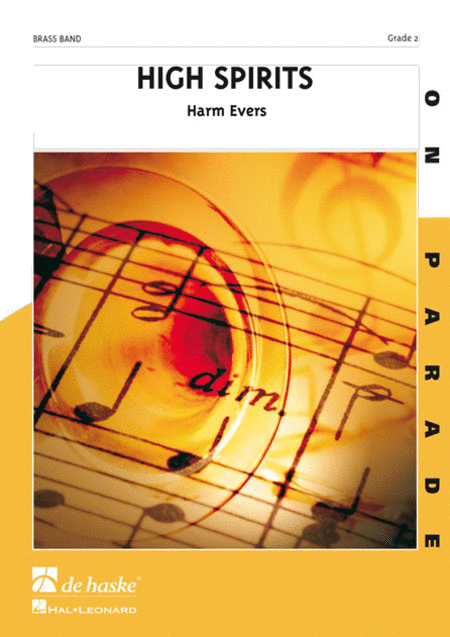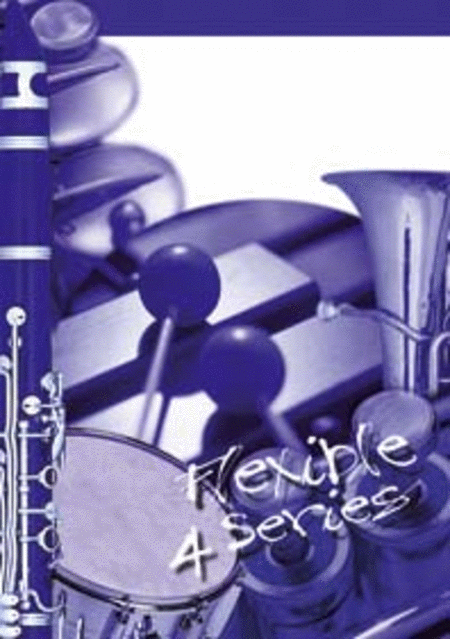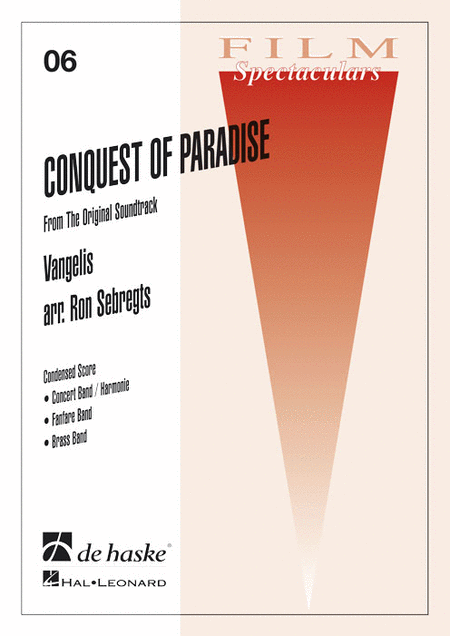|
| Poet and Peasant Overture
Ensemble de cuivres [Conducteur et Parties séparées]
Hal Leonard
Score and Parts. Performed by The Canadian Brass. By Franz von Suppe. Arranged b...(+)
Score and Parts.
Performed by The Canadian
Brass. By Franz von
Suppe. Arranged by Fred
Mills. Brass Ensemble.
Size 9x12 inches.
Published by Hal Leonard
Corporation.
$20.00 - Voir plus => AcheterDélais: 24 hours - In Stock | | | |
| Santa Claus Is Comin' to Town
Ensemble de cuivres - Intermédiaire
Alfred Publishing
By Haven Gillespie, John Frederick Coots. Arranged by Calvin Custer. For Brass C...(+)
By Haven Gillespie, John
Frederick Coots. Arranged
by Calvin Custer. For
Brass Choir. Brass -
Brass Choir. Ensembles
That Swing. Level: Medium
Easy (grade 3). 44 pages.
Published by Alfred
Publishing.
$15.00 - Voir plus => AcheterDélais: 1 to 2 weeks | | | |
| Playing Together
Ensemble de cuivres [Conducteur]
Gobelin Music Publications
Brass Band - easy SKU: BT.GOB-000369-130 Composed by John DeBee. Score On...(+)
Brass Band - easy SKU:
BT.GOB-000369-130
Composed by John DeBee.
Score Only. 8 pages.
Gobelin Music
Publications #GOB
000369-130. Published by
Gobelin Music
Publications
(BT.GOB-000369-130).
Playing
Together is and remains
the motto of wind music,
but also enjoying it
should take a prominent
place.
Playing
Together a composition
(in 8 parts) for
beginning youth bands,
combines these two
features very pleasantly.
Samen spelen is
en blijft het motto voor
de blaasmuziek maar ook
het plezier maken hoort
voorop te staan.
Playing Together, een
compositie (in 8 delen)
voor startende
jeugdorkesten, combineert
die twee onderdelen op
een zeerprettige
wijze. $21.95 - Voir plus => AcheterDélais: 4 to 6 weeks | | | |
| Playing Together
Ensemble de cuivres [Conducteur et Parties séparées]
Gobelin Music Publications
Brass Band - easy SKU: BT.GOB-000369-030 Composed by John DeBee. Set (Sco...(+)
Brass Band - easy SKU:
BT.GOB-000369-030
Composed by John DeBee.
Set (Score & Parts). 52
pages. Gobelin Music
Publications #GOB
000369-030. Published by
Gobelin Music
Publications
(BT.GOB-000369-030).
Playing
Together is and remains
the motto of wind music,
but also enjoying it
should take a prominent
place.
Playing
Together a composition
(in 8 parts) for
beginning youth bands,
combines these two
features very pleasantly.
Samen spelen is
en blijft het motto voor
de blaasmuziek maar ook
het plezier maken hoort
voorop te staan.
Playing Together, een
compositie (in 8 delen)
voor startende
jeugdorkesten, combineert
die twee onderdelen op
een zeerprettige
wijze. $78.95 - Voir plus => AcheterDélais: 4 to 6 weeks | | | |
| The Baltic Way
Ensemble de cuivres [Conducteur] - Intermédiaire
De Haske Publications
Brass Band - Grade 4 SKU: BT.DHP-1206253-130 Composed by Jan de Haan. Con...(+)
Brass Band - Grade 4
SKU:
BT.DHP-1206253-130
Composed by Jan de Haan.
Concert and Contest
Collection Brass Band en
Fanfare. Concert Piece.
Score Only. Composed
2019. 48 pages. De Haske
Publications #DHP
1206253-130. Published by
De Haske Publications
(BT.DHP-1206253-130).
English-German-French-
Dutch. In 1989, the
demonstration named the
Baltic Way also
known as the Baltic
Chain— was held in
the Baltic states of
Estonia, Latvia and
Lithuania by its citizens
in a call for
independence from the
Soviet Union. On 23rd
August 1989, some two
million participants
formed a human chain,
hand-in-hand all the way
from the Estonian capital
of Tallinn its Latvian
counterpart, Riga,
through to the Lithuanian
capital of Vilnius - six
hundred kilometres long.
It became the longest
human chain ever created
and turned out to be the
final push needed for
much sought-after
independence. This
historic event became the
source of inspiration for
this composition. The
introduction of thefirst
movement, ‘Struggle
for Independence’,
is based on a nocturne
for piano by the renowned
Lithuanian composer and
painter Mikalojus
Konstantinas iurlionis
(1875-1911), thematic
material from which has
been incorporated
throughout the whole
composition. The
melancholic beginning is
followed by a powerful
theme which reflects the
resolve of the Baltic
people. The sudden
aggressive, dissonant
chords and a dominant
and—in rhythmic
terms—contrary
bass drum announce that
the resistance is not
going smoothly. Just for
a moment, we hear the
anthem of the Soviet
Union in the lower brass,
but this is relentlessly
pushed to the background
by the rest of the band
playing the Lithuanian
national anthem,
‘Tautiška giesm
’ (Lithuania, our
homeland). The second
movement, ‘Decades
of Suffering’,
echoes life under the
Soviet Union's thumb. In
the pursuit of
independence, a peaceful
protest is planned in
which a human chain is
formed across the Baltic
states of Estonia, Latvia
and Lithuania. This
‘Chain of
Freedom’ is
depicted in the final
movement of the work.
De Baltische Weg
(The Baltic Way)
was een demonstratie van
de bevolking van de
Baltische staten die in
1989 plaatsvond als een
roep om onafhankelijkheid
van de Sovjet-Unie. Deze
historische gebeurtenis
vormde de inspiratiebron
voor deze compositie. Van
Vilnius via Riga naar
Tallinn werd een
zeshonderd kilometer
lange keten van naar
schatting twee miljoen
mensen gevormd. Op 23
augustus 1989 gaven al
die mensen elkaar de hand
en werd De Baltische Weg
de langste menselijke
keten ooit. Het bleek de
uiteindelijke opmaat tot
de zo gewenste
onafhankelijkheid. De
inleiding van het eerste
deel, ‘Struggle for
Independence’, is
gebaseerd op een nocturne
voor piano van
devooraanstaande Litouwse
componist en
kunstschilder Mikalojus
Konstantinas iurlionis
(1875-1911). Het
thematische materiaal van
deze nocturne is door de
hele compositie heen
verwerkt. Na het
melancholische begin
volgt een krachtig thema,
waarmee de strijdbaarheid
van de Baltische
bevolking wordt
uitgebeeld. De
plotselinge agressieve
dissonante akkoorden en
een dominante en ritmisch
gezien tegendraadse grote
trom laten horen dat het
verzet niet eenvoudig
verloopt. Even klinkt het
begin van het volkslied
van de Sovjet-Unie in het
lage koper, maar dat
wordt door de rest van de
band onverbiddelijk naar
de achtergrond verwezen
door het Litouwse
nationale volkslied
‘Tautiška giesm
’ (Litouwen, ons
vaderland). In deel twee,
‘Decades of
Suffering’, wordt
het leven onder het juk
van de Sovjet-Unie
verklankt. In het streven
naar onafhankelijkheid
worden plannen gemaakt om
als vreedzaam protest
tegen de onderdrukking
een menselijke keten te
vormen over de wegen van
de Baltische staten
Litouwen, Letland en
Estland. Deze
‘Chain of
Freedom’ wordt in
het laatste deel van het
werk muzikaal
weergegeven.
Der
sogenannte Baltischer Weg
(The Baltic Way)
auch unter dem Namen
Baltische Kette bekannt
war 1989 eine
Demonstration von
Bürgern in den
baltischen Staaten
Estland, Lettland und
Litauen mit dem Aufruf
zur Unabhängigkeit von
der Sowjetunion. Am 23.
August 1989 bildeten rund
zwei Millionen Teilnehmer
eine sechshundert
Kilometer lange
Menschenkette, die von
der estnischen Hauptstadt
Tallinn über das
lettische Riga bis zur
litauischen Hauptstadt
Vilnius reichte. Die
längste Menschenkette,
die jemals geschaffen
wurde, erwies sich als
der letzte Schritt, der
zur lang ersehnten
Unabhängigkeit
führte. Dieses
historische Ereignis
diente der Komposition
alsInspirationsquelle.
Die Einleitung des ersten
Satzes, Struggle for
Independence“,
basiert auf einem
Nocturne für Klavier
des bekannten litauischen
Komponisten und Malers
Mikalojus Konstantinas
iurlionis (1875 1911),
dessen thematisches
Material in der gesamten
Komposition verwendet
wird. Dem melancholischen
Anfang folgt ein
mitreißendes Thema,
das die Entschlossenheit
der baltischen
Bevölkerung
widerspiegelt. Die
plötzlichen
aggressiven, dissonanten
Akkorde und eine
dominante und rhythmisch
gegenläufige Bewegung
in der Basstrommel
kündigen an, dass der
Widerstand nicht
reibungslos verläuft.
Für einen kurzen
Moment erklingt die Hymne
der Sowjetunion in den
tiefen Blechbläsern,
aber diese wird
unerbittlich vom
restlichen Orchester in
den Hintergrund
gedrängt, welches die
litauische Nationalhymne
Tautiška giesm “
(Litauen, unser
Heimatland“)
spielt. Der zweite Satz,
Decades of
Suffering“,
spiegelt das Leben unter
dem Joch der Sowjetunion
wider. Für das Streben
nach Unabhängigkeit
war ein friedlicher
Protest geplant, bei dem
eine Menschenkette durch
die baltischen Staaten
Estland, Lettland und
Litauen gebildet wurde.
Diese Chain of
Freedom“ wird im
letzten Satz des Werkes
beschrieben.
En
1989, la manifestation
nommée « La Voie
balte » (The Baltic
Way) s’est
tenue en Estonie, en
Lettonie et en Lituanie,
les pays baltes dont les
citoyens demandaient
être indépendants
de l’Union
soviétique. Le 23 ao t
1989, quelque deux
millions de personnes se
tenant par la main ont
formé une chaîne
humaine de 600 km de long
reliant les trois
capitales Tallinn
(Estonie), Riga
(Lettonie) et Vilnius
(Lituanie). Cette
chaîne humaine, la
plus longue ce jour,
donna une impulsion
décisive au
rétablissement
d’une
indépendance vivement
souhaitée. Cet
événement
historique est devenu
source
d’inspiration pour
cette composition.
L’introduction du
premier mouvement,«
Struggle for Independence
», est fondée sur
un nocturne pour piano du
célèbre compositeur
et peintre letton
Mikalojus Konstantinas
iurlionis (1875-1911). Du
matériel thématique
emprunté ce nocturne
est parsemé travers la
présente composition.
Un début
mélancolique est suivi
d’un thème
puissant qui reflète
la détermination des
peuples baltes. La
présence soudaine
d’accords
agressifs et dissonants,
associés une grosse
caisse dont le
décalage rythmique
domine, indiquent que la
résistance rencontre
des obstacles. Nous
entendons
momentanément
l’hymne
soviétique dans les
cuivres graves, mais cet
air est inexorablement
repoussé
l’arrière-plan
par le reste de
l’orchestre
interprétant
l’hymne national
de Lettonie, «
Tautiška giesm »
(Lettonie, notre patrie).
Le deuxième mouvement,
« Decades of Suffering
», dépeint la vie
sous le joug de
l’Union
soviétique. la
recherche de
l’indépendance,
une manifestation
pacifique est
organisée sous la
forme d’une
chaîne humaine
traversant les trois pays
baltes l ’Estonie,
la Lettonie et la
Lituanie. Le dernier
mouvement de la pièce,
« Chain of Freedom
», exprime cet appel
la liberté. $30.95 - Voir plus => AcheterDélais: 2 to 3 weeks | | | |
| The Baltic Way
Ensemble de cuivres [Conducteur et Parties séparées] - Intermédiaire
De Haske Publications
Brass Band - Grade 4 SKU: BT.DHP-1206253-030 Composed by Jan de Haan. Con...(+)
Brass Band - Grade 4
SKU:
BT.DHP-1206253-030
Composed by Jan de Haan.
Concert and Contest
Collection Brass Band en
Fanfare. Concert Piece.
Set (Score & Parts).
Composed 2019. De Haske
Publications #DHP
1206253-030. Published by
De Haske Publications
(BT.DHP-1206253-030).
English-German-French-
Dutch. In 1989, the
demonstration named the
Baltic Way also
known as the Baltic
Chain— was held in
the Baltic states of
Estonia, Latvia and
Lithuania by its citizens
in a call for
independence from the
Soviet Union. On 23rd
August 1989, some two
million participants
formed a human chain,
hand-in-hand all the way
from the Estonian capital
of Tallinn its Latvian
counterpart, Riga,
through to the Lithuanian
capital of Vilnius - six
hundred kilometres long.
It became the longest
human chain ever created
and turned out to be the
final push needed for
much sought-after
independence. This
historic event became the
source of inspiration for
this composition. The
introduction of thefirst
movement, ‘Struggle
for Independence’,
is based on a nocturne
for piano by the renowned
Lithuanian composer and
painter Mikalojus
Konstantinas iurlionis
(1875-1911), thematic
material from which has
been incorporated
throughout the whole
composition. The
melancholic beginning is
followed by a powerful
theme which reflects the
resolve of the Baltic
people. The sudden
aggressive, dissonant
chords and a dominant
and—in rhythmic
terms—contrary
bass drum announce that
the resistance is not
going smoothly. Just for
a moment, we hear the
anthem of the Soviet
Union in the lower brass,
but this is relentlessly
pushed to the background
by the rest of the band
playing the Lithuanian
national anthem,
‘Tautiška giesm
’ (Lithuania, our
homeland). The second
movement, ‘Decades
of Suffering’,
echoes life under the
Soviet Union's thumb. In
the pursuit of
independence, a peaceful
protest is planned in
which a human chain is
formed across the Baltic
states of Estonia, Latvia
and Lithuania. This
‘Chain of
Freedom’ is
depicted in the final
movement of the work.
De Baltische Weg
(The Baltic Way)
was een demonstratie van
de bevolking van de
Baltische staten die in
1989 plaatsvond als een
roep om onafhankelijkheid
van de Sovjet-Unie. Deze
historische gebeurtenis
vormde de inspiratiebron
voor deze compositie. Van
Vilnius via Riga naar
Tallinn werd een
zeshonderd kilometer
lange keten van naar
schatting twee miljoen
mensen gevormd. Op 23
augustus 1989 gaven al
die mensen elkaar de hand
en werd De Baltische Weg
de langste menselijke
keten ooit. Het bleek de
uiteindelijke opmaat tot
de zo gewenste
onafhankelijkheid. De
inleiding van het eerste
deel, ‘Struggle for
Independence’, is
gebaseerd op een nocturne
voor piano van
devooraanstaande Litouwse
componist en
kunstschilder Mikalojus
Konstantinas iurlionis
(1875-1911). Het
thematische materiaal van
deze nocturne is door de
hele compositie heen
verwerkt. Na het
melancholische begin
volgt een krachtig thema,
waarmee de strijdbaarheid
van de Baltische
bevolking wordt
uitgebeeld. De
plotselinge agressieve
dissonante akkoorden en
een dominante en ritmisch
gezien tegendraadse grote
trom laten horen dat het
verzet niet eenvoudig
verloopt. Even klinkt het
begin van het volkslied
van de Sovjet-Unie in het
lage koper, maar dat
wordt door de rest van de
band onverbiddelijk naar
de achtergrond verwezen
door het Litouwse
nationale volkslied
‘Tautiška giesm
’ (Litouwen, ons
vaderland). In deel twee,
‘Decades of
Suffering’, wordt
het leven onder het juk
van de Sovjet-Unie
verklankt. In het streven
naar onafhankelijkheid
worden plannen gemaakt om
als vreedzaam protest
tegen de onderdrukking
een menselijke keten te
vormen over de wegen van
de Baltische staten
Litouwen, Letland en
Estland. Deze
‘Chain of
Freedom’ wordt in
het laatste deel van het
werk muzikaal
weergegeven.
Der
sogenannte Baltischer Weg
(The Baltic Way)
auch unter dem Namen
Baltische Kette bekannt
war 1989 eine
Demonstration von
Bürgern in den
baltischen Staaten
Estland, Lettland und
Litauen mit dem Aufruf
zur Unabhängigkeit von
der Sowjetunion. Am 23.
August 1989 bildeten rund
zwei Millionen Teilnehmer
eine sechshundert
Kilometer lange
Menschenkette, die von
der estnischen Hauptstadt
Tallinn über das
lettische Riga bis zur
litauischen Hauptstadt
Vilnius reichte. Die
längste Menschenkette,
die jemals geschaffen
wurde, erwies sich als
der letzte Schritt, der
zur lang ersehnten
Unabhängigkeit
führte. Dieses
historische Ereignis
diente der Komposition
alsInspirationsquelle.
Die Einleitung des ersten
Satzes, Struggle for
Independence“,
basiert auf einem
Nocturne für Klavier
des bekannten litauischen
Komponisten und Malers
Mikalojus Konstantinas
iurlionis (1875 1911),
dessen thematisches
Material in der gesamten
Komposition verwendet
wird. Dem melancholischen
Anfang folgt ein
mitreißendes Thema,
das die Entschlossenheit
der baltischen
Bevölkerung
widerspiegelt. Die
plötzlichen
aggressiven, dissonanten
Akkorde und eine
dominante und rhythmisch
gegenläufige Bewegung
in der Basstrommel
kündigen an, dass der
Widerstand nicht
reibungslos verläuft.
Für einen kurzen
Moment erklingt die Hymne
der Sowjetunion in den
tiefen Blechbläsern,
aber diese wird
unerbittlich vom
restlichen Orchester in
den Hintergrund
gedrängt, welches die
litauische Nationalhymne
Tautiška giesm “
(Litauen, unser
Heimatland“)
spielt. Der zweite Satz,
Decades of
Suffering“,
spiegelt das Leben unter
dem Joch der Sowjetunion
wider. Für das Streben
nach Unabhängigkeit
war ein friedlicher
Protest geplant, bei dem
eine Menschenkette durch
die baltischen Staaten
Estland, Lettland und
Litauen gebildet wurde.
Diese Chain of
Freedom“ wird im
letzten Satz des Werkes
beschrieben.
En
1989, la manifestation
nommée « La Voie
balte » (The Baltic
Way) s’est
tenue en Estonie, en
Lettonie et en Lituanie,
les pays baltes dont les
citoyens demandaient
être indépendants
de l’Union
soviétique. Le 23 ao t
1989, quelque deux
millions de personnes se
tenant par la main ont
formé une chaîne
humaine de 600 km de long
reliant les trois
capitales Tallinn
(Estonie), Riga
(Lettonie) et Vilnius
(Lituanie). Cette
chaîne humaine, la
plus longue ce jour,
donna une impulsion
décisive au
rétablissement
d’une
indépendance vivement
souhaitée. Cet
événement
historique est devenu
source
d’inspiration pour
cette composition.
L’introduction du
premier mouvement,«
Struggle for Independence
», est fondée sur
un nocturne pour piano du
célèbre compositeur
et peintre letton
Mikalojus Konstantinas
iurlionis (1875-1911). Du
matériel thématique
emprunté ce nocturne
est parsemé travers la
présente composition.
Un début
mélancolique est suivi
d’un thème
puissant qui reflète
la détermination des
peuples baltes. La
présence soudaine
d’accords
agressifs et dissonants,
associés une grosse
caisse dont le
décalage rythmique
domine, indiquent que la
résistance rencontre
des obstacles. Nous
entendons
momentanément
l’hymne
soviétique dans les
cuivres graves, mais cet
air est inexorablement
repoussé
l’arrière-plan
par le reste de
l’orchestre
interprétant
l’hymne national
de Lettonie, «
Tautiška giesm »
(Lettonie, notre patrie).
Le deuxième mouvement,
« Decades of Suffering
», dépeint la vie
sous le joug de
l’Union
soviétique. la
recherche de
l’indépendance,
une manifestation
pacifique est
organisée sous la
forme d’une
chaîne humaine
traversant les trois pays
baltes l ’Estonie,
la Lettonie et la
Lituanie. Le dernier
mouvement de la pièce,
« Chain of Freedom
», exprime cet appel
la liberté. $137.95 - Voir plus => AcheterDélais: 2 to 3 weeks | | | |
| Compostela
Ensemble de cuivres [Conducteur] - Intermédiaire
De Haske Publications
Brass Band - Grade 4 SKU: BT.DHP-1226427-130 The Way of St James. ...(+)
Brass Band - Grade 4
SKU:
BT.DHP-1226427-130
The Way of St
James. Composed by
Thierry Deleruyelle.
Concert and Contest
Collection Brass Band en
Fanfare. Concert Piece.
Score Only. Composed
2022. 48 pages. De Haske
Publications #DHP
1226427-130. Published by
De Haske Publications
(BT.DHP-1226427-130).
English-German-French-
Dutch. Four roads
lead to Santiago, so
begins the Book of the
Pilgrim. Written in the
12th century, the Codex
Calixtinus opened the way
for pilgrimage from most
cities in Europe and
North Africa to Santiago
de Compostela, in Spain.
Compostela - The Way
of St James describes
the pilgrims' journey.
After a slow
introduction, a brilliant
theme announces the start
of the journey. The
arrival in Spain is
indicated by incantatory
chants and majestic
chords. Finally, the
music softens as the
pilgrims venerate St
James.
‘Er
leiden vier wegen naar
Santiago’ zo
begint het boek der
pelgrims. De Codex
Calixtinus, geschreven in
de 12e eeuw, effende
indertijd de weg voor
pelgrimages vanuit de
meeste steden in Europa
en Noord-Afrika naar het
Spaanse Santiago de
Compostela. Compostela
- The Way of St James
(Compostela de weg van de
heilige Jakobus) is een
beschrijving van
zo’n
pelgrimstocht. Na een
langzame inleiding
kondigt een stralend
thema het begin van de
reis aan. De aankomst in
Spanje wordt gemarkeerd
door bezwerende
melodieën en
majestueuze akkoorden.
Tot slot wordt de muziek
zachter om de diepe
eerbied van de pelgrims
voor de heilige Jakobus
te verklanken.
Vier Wege
führen nach
Santiago“, so
beginnt das Pilgerbuch.
Der im 12. Jahrhundert
verfasste Codex
Calixtinus ebnete den Weg
für Pilgerreisen aus
den meisten Städten
Europas und Nordafrikas
nach Santiago de
Compostela in Spanien.
Compostela - The Way
of St James
beschreibt die
Pilgerreise auf dem
Jakobsweg. Nach einer
langsamen Einleitung
kündigt ein brillantes
Thema den Beginn der
Reise an. Die Ankunft in
Spanien wird durch
religiöse Gesänge
und majestätische
Akkorde angezeigt.
Schließlich wird die
Musik leiser, während
die Pilger den Heiligen
Jakob verehren.
« Quatre
chemins vont
Saint-Jacques », ainsi
commence le Livre du
Pèlerin. Écrit au
XIIe siècle, le Codex
Calixtinus ouvre la voie
du pèlerinage qui va
de la plupart des villes
d’Europe et du
nord de l’Afrique
vers Saint-Jacques de
Compostelle, en Espagne.
Compostela - Sur le
chemin de St Jacques de
Compostelle (The Way of
St James) décrit
la marche des
pèlerins. Après une
lente introduction, un
thème brillant annonce
qu’il faut prendre
la route.
L’arrivée en
Espagne est indiquée
par des chants
incantatoires et des
accords majestueux.
Enfin, la musique
d’adoucit alors
que les pèlerins
vénèrent St
Jacques. $25.95 - Voir plus => AcheterDélais: 2 to 3 weeks | | | |
| Compostela
Ensemble de cuivres [Conducteur et Parties séparées] - Intermédiaire
De Haske Publications
Brass Band - Grade 4 SKU: BT.DHP-1226427-030 The Way of St James. ...(+)
Brass Band - Grade 4
SKU:
BT.DHP-1226427-030
The Way of St
James. Composed by
Thierry Deleruyelle.
Concert and Contest
Collection Brass Band en
Fanfare. Concert Piece.
Set (Score & Parts).
Composed 2022. De Haske
Publications #DHP
1226427-030. Published by
De Haske Publications
(BT.DHP-1226427-030).
English-German-French-
Dutch. Four roads
lead to Santiago, so
begins the Book of the
Pilgrim. Written in the
12th century, the Codex
Calixtinus opened the way
for pilgrimage from most
cities in Europe and
North Africa to Santiago
de Compostela, in Spain.
Compostela - The Way
of St James describes
the pilgrims' journey.
After a slow
introduction, a brilliant
theme announces the start
of the journey. The
arrival in Spain is
indicated by incantatory
chants and majestic
chords. Finally, the
music softens as the
pilgrims venerate St
James.
‘Er
leiden vier wegen naar
Santiago’ zo
begint het boek der
pelgrims. De Codex
Calixtinus, geschreven in
de 12e eeuw, effende
indertijd de weg voor
pelgrimages vanuit de
meeste steden in Europa
en Noord-Afrika naar het
Spaanse Santiago de
Compostela. Compostela
- The Way of St James
(Compostela de weg van de
heilige Jakobus) is een
beschrijving van
zo’n
pelgrimstocht. Na een
langzame inleiding
kondigt een stralend
thema het begin van de
reis aan. De aankomst in
Spanje wordt gemarkeerd
door bezwerende
melodieën en
majestueuze akkoorden.
Tot slot wordt de muziek
zachter om de diepe
eerbied van de pelgrims
voor de heilige Jakobus
te verklanken.
Vier Wege
führen nach
Santiago“, so
beginnt das Pilgerbuch.
Der im 12. Jahrhundert
verfasste Codex
Calixtinus ebnete den Weg
für Pilgerreisen aus
den meisten Städten
Europas und Nordafrikas
nach Santiago de
Compostela in Spanien.
Compostela - The Way
of St James
beschreibt die
Pilgerreise auf dem
Jakobsweg. Nach einer
langsamen Einleitung
kündigt ein brillantes
Thema den Beginn der
Reise an. Die Ankunft in
Spanien wird durch
religiöse Gesänge
und majestätische
Akkorde angezeigt.
Schließlich wird die
Musik leiser, während
die Pilger den Heiligen
Jakob verehren.
« Quatre
chemins vont
Saint-Jacques », ainsi
commence le Livre du
Pèlerin. Écrit au
XIIe siècle, le Codex
Calixtinus ouvre la voie
du pèlerinage qui va
de la plupart des villes
d’Europe et du
nord de l’Afrique
vers Saint-Jacques de
Compostelle, en Espagne.
Compostela - Sur le
chemin de St Jacques de
Compostelle (The Way of
St James) décrit
la marche des
pèlerins. Après une
lente introduction, un
thème brillant annonce
qu’il faut prendre
la route.
L’arrivée en
Espagne est indiquée
par des chants
incantatoires et des
accords majestueux.
Enfin, la musique
d’adoucit alors
que les pèlerins
vénèrent St
Jacques. $130.95 - Voir plus => AcheterDélais: 2 to 3 weeks | | | |
| Versailles
Ensemble de cuivres [Conducteur et Parties séparées] - Facile
De Haske Publications
Brass Band - Grade 2 SKU: BT.DHP-1043670-030 Composed by Christian Bouthi...(+)
Brass Band - Grade 2
SKU:
BT.DHP-1043670-030
Composed by Christian
Bouthier. Flexible 4
Series. Concert Piece.
Set (Score & Parts).
Composed 2004. De Haske
Publications #DHP
1043670-030. Published by
De Haske Publications
(BT.DHP-1043670-030).
Versailles,
composed by Christian
Bouthier, reflects a
number of impressions of
the royal castle in
Versailles, near Paris.
There are four movements
consisting of Le Chateau,
Le grand Trianon,
L’Appartement du
Roi and Les Grandes Eaux
each of which depicts a
different aspect of
Versailles both inside
and outside. Bring a
touch of regalness to any
concert band programme.
Versailles
, gecomponeerd door
Christian Bouthier, geeft
een aantal indrukken weer
van het koninklijke
kasteel te Versailles,
vlak bij Parijs. De vier
afwisselende delen
beschrijven
achtereenvolgens Le ch
teau (het
kasteelzelf), Le grand
Trianon (het extra
complex dat Lodewijk XIV
liet bouwen),
L’Appartement
du Roi (het
appartement van de
koning) en Les Grandes
Eaux (de
waterpartijen). De fraaie
thema’s worden
verklankt inboeiende,
gemakkelijk te spelen
muziek voor
blaasorkest.
Ve
rsailles, aus der
Feder von Christian
Bouthier, spiegelt eine
Reihe von Impressionen
des königlichen
Schlosses in Versailles
bei Paris wider. Die vier
abwechslungsreichen
Sätze beschreiben das
Schloss selbst, den
Nebenpalast Le Grand
Trianon, die Gemächer
des Königs und das
weitläufige System an
Wasserläufen und
Teichen, welches die
ganze Anlage einst
versorgte. Prächtige
Motive, verpackt in
interessante, leicht
spielbare Musik für
Brass
Band.
Versaille
s de Christian
Bouthier est une suite en
quatre tableaux
inspirés du
célèbre Ch teau de
Versailles près de
Paris.1. Le Ch teau
Dès 1623, Louis XIII,
le père de Louis XIV
(dit le Roi-Soleil),
construit Versailles un
premier ch teau
majestueux. Plus tard,
l’architecte
Philibert Le Roy
s’est vu confier
la t che de
l’agrandir. Et
durant des siècles,
divers autres architectes
se consacrent
l’agrandissement
et
l’embellissement
de ce superbe palais pour
en faire cet ensemble de
façades et de b
timents majestueux,
célèbre dans le
monde entier.2. Le grand
Trianon Trianon est le
nom d'un village
acheté par Louis XIV
dans le but de construire
sur ces nouvelles terres
unautre palais. Cherchant
se défaire du
protocole trop pesant de
Versailles, le Roi est
Trianon plus proche des
siens. Trianon demeurera
un lieu de détente,
loin de l'étiquette et
des fatigues du pouvoir.
Les travaux du premier
Trianon débutent en
1670. De nombreux b
timents et péristyles
seront rajoutés au fil
des années.3.
L'Appartement du Roi En
1683, Louis XIV quitte
son Grand Appartement
pour vivre dans son
appartement intérieur
qu'on appelle
l'Appartement du Roi.
Depuis 1701, la suite des
pièces est la suivante
: salle des Gardes,
antichambre du Grand
Couvert, antichambre de
l'Œil-de-bœuf,
chambre du Roi, cabinet
du Conseil. L'apparat des
plafonds peints qui
caractérisait le
décor du Grand
Appartement, fait place
un décor sobre où
les plafonds sont
laissés nus. Cet
allégement correspond
un nouveau go t du
Roi-Soleil.4. Les Grandes
EauxTrouver les
ressources en eaux pour
les fontaines de
Versailles fut la
préoccupation
constante du Roi-Soleil.
Même en pleine guerre,
il s'en inquiétait. Ce
sera
l’extraordinaire
Machine de Marly qui
apportera les eaux de la
Seine Versailles.
L’arrivée des
eaux au Ch teau aura
nécessité la
construction d’un
réseau hydraulique de
rigoles, de fossés et
d'aqueducs
s’étendant sur
près de deux cent
kilomètres. L'ensemble
demeure unique notamment
par son état de
conservation. $78.95 - Voir plus => AcheterDélais: 2 to 3 weeks | | | |
| Tre Skizze
Ensemble de cuivres [Conducteur et Parties séparées] - Intermédiaire/avancé
De Haske Publications
Brass Ensemble - Grade 6 SKU: BT.DHP-1084255-070 Brass Ensemble (+ Per...(+)
Brass Ensemble - Grade 6
SKU:
BT.DHP-1084255-070
Brass Ensemble (+
Percussion). Composed
by Jan Van der Roost.
Symphonic Brass Ensemble
Series. Set (Score &
Parts). Composed 2008. De
Haske Publications #DHP
1084255-070. Published by
De Haske Publications
(BT.DHP-1084255-070).
ISBN 9789043129091.
9x12 inches.
English-German-French-Dut
ch. Tre
Skizze is een
interessante compositie
in drie delen. Het eerste
deel, Sfere, is
gedeeltelijk opgebouwd
uit improvisatorische
elementen, maar bevat ook
melodische of thematische
gegevens. Deel twee,
Canzona,is heel
anders van karakter:
hierin wordt de muziek
van Giovanni Gabrieli met
moderne instrumenten tot
leven gebracht.
Aanvankelijk in een min
of meer stijlgetrouw
idioom en vervolgens met
meer hedendaagse klanken
en middelen
bijgekleurd.Fugato e
Chorale is voor alle
muzikanten technisch en
ritmisch interessant, dit
derde en laatste deel
leidt naar een sonore
apotheose.
Drei
Skizzen bilden dieses
Werk: die erste,
Sfere, teilweise
improvisatorisch und sehr
stimmungsvoll, die
zweite, Canzona,
mit Anklängen an Musik
aus dem 16. Jahrhundert,
den Schluss bildet das
technisch und rhythmisch
sehr interessante
Fugato e Chorale.
Das Set enthält
folgende
Stimmen:Trompete 1 (+
B-Pikkolotrompete &
B-Flügelhorn)Trompete
2 (+
B-Flügelhorn)Trompete
3 (+
B-Flügelhorn)Trompete
4 (+
B-Flügelhorn)F-Horn
1F-Horn 2Posaune 1 (+
B-Euphonium)Posaune 2 (+
B-Euphonium)BassposauneTu
baPercussion 1Percussion
2zusätzlich: Posaune
in B & 1 & 2, Tuba in Es
(TC). $105.95 - Voir plus => AcheterDélais: 2 to 3 weeks | | | |
| Animal Kingdom
Ensemble de cuivres [Conducteur et Parties séparées] - Facile
Gobelin Music Publications
Brass Band - Grade 2 SKU: BT.GOB-000729-030 Composed by William Vean. Set...(+)
Brass Band - Grade 2
SKU:
BT.GOB-000729-030
Composed by William Vean.
Set (Score & Parts). 104
pages. Gobelin Music
Publications #GOB
000729-030. Published by
Gobelin Music
Publications
(BT.GOB-000729-030).
In this
composition William Vean
takes you on a journey
through the fascinating
and exciting world of
animals. Apart from it
being a composition
filled with special
effects, Animal Kingdom
contains many educational
elements, such as playing
inswing (triplets
feeling), chromatics,
flutter tonguing, gypsy
tuning, varying keys,
and, of course, dynamics
and articulation. The
melodic lines occur in
all four voices, as well
as in all percussion
parts, providing each
musician with
theopportunity to play a
solo or to accompany.
Highly recommended for
your youth band!
William Vean is an
educational composer. He
knows how to musically
shape the special
elements from our daily
lives. His music is
therefore veryexpressive,
containing creative
solutions to possible
problems. Special ways of
playing make his music
particularly interesting
for the winds, but the
percussion section is
also featured in his
special effects.
The world of the
animalsalways plays on
ones imagination. In
Animal Kingdom, William
Vean has portrayed a
number of animals in a
special manner:
Kevin Kangaroo - The
jumping character of this
animal can be heard in
different voices. The
swing style
alsoemphasizes the
characteristic movements
of the kangaroo. Playing
in swing style can be
practised by using
scales.
Eddy
Elephant - For some of
his smaller fellow fauna
friends this can be quite
an ordeal, but for Eduard
(Eddy for friendsand
intimates) it is his
daily walk.
Baldrick Bat - Baldrick
the Bat is a mysterious
character. This can be
heard in the fast moving
valves and keys,
accompanied by special
effects in the percussion
section.
Curtis
Camel - Curtisthe Camel
trudges across the
desert, feeling bored.
The idea that the horizon
will never change does
not affect him anymore.
He has accepted his fate.
The distinctive tones
from the gypsy scale
provide the suitable
oriental sounds.
BettyButterfly -
Butterfly Betty
elegantly, and without
worries, flutters from
flower to flower in the
garden. Her motto: Carpe
Diem (Seize the Day).
Betty is a one-day
butterfly.
Marvin
Monkey - A swing monkey
stirs up the feelings.
Evenmembers of the
orchestra will look like
real monkeys. How about
your audience?
Each part has its own
difficulties and
challenges.
Important
in the first part is
playing in swing
(triplets feeling). This
can be practised
usingscales.
In the
second part ensemble
playing and balance are
important.
In
Baldrick additional
information on the
effects that have to be
played might be useful.
New sounds are, of
course, welcome.
Curtis the Camel
introduces thegypsy
scale. Additional
explanation of the use of
the scale might be
useful. Key changes are
interesting in this part.
A slight accent on the
first beat of the bar
will add to the charm of
this part.
Marvin the
Monkey brings back the
swingrhythm that was
introduced in the first
part, alternated by a
straight part with
attention to chromatics
and articulation.
A story teller will
definitely be an asset
when performing this
composition.
Willi
am Vean neemt u mee in de
fascinerende en
verrassende wereld van
het dierenrijk.
Naast leuke speelmuziek
vol ''special effects'',
is deze compositie zeer
educatief van opzet.
Als interessant
inhoudelijke zaken
komenonder andere aan de
orde - het in swing
spelen (triolen feeling),
chromatiek, flatterzunge,
zigeunertoonsoort,
afwisselende maatsoorten
en natuurlijk dynamiek en
articulatie.
Tevens
lopen de melodielijnen
zowel door alle 4
destemmen als alle
percussie partijen, zodat
iedere muzikant de
gelegenheid krijgt om te
soleren dan wel te
begeleiden.
Een
aanrader voor uw
jeugdorkest!
De
dierenwereld spreekt
muzikaal gezien altijd
tot de
verbeelding.William Vean
heeft op bijzondere wijze
een aantal dieren
neergezet.
De
componist weet op een
bijzondere wijze
elementen uit het
dagelijkse leven muzikaal
vorm te geven. Zijn
muziek is daarom erg
beeldend, de problemen
aanwijsbaarmaar de
oplossingen zijn
creatief.
Voor
blazers bijzonder
interessant door de
bijzondere speelmanieren
maar het slagwerk is ook
bedeeld met een aantal
'special effects'.
Kevin Kangaroo -
Het springerige
karakterwordt door
verschillende stemmen
neergezet. De swingende
speelstijl benadrukt de
karakteristieke
bewegingen van de
kangoeroe. Let op de
specifieke swingstijl.
Heel goed te oefenen met
toonladders.
Eddy
Elephant - Voor
sommigekleinere
faunagenoten elke keer
weer een beproeving maar
voor Eduard (Eddy voor
vrienden en intimi) is
dit zijn dagelijkse
wandelingetje. Giro
224544 t.b.v. de geleden
schade.
Baldrick
Bat - De vleermuis
Baldrick is eenmysterieus
type. Dat mysterieuze
aspect wordt auditief
weergegeven door het snel
indrukken van ventielen
en kleppen, ondersteund
door
slagwerkeffecten.
Curtis Camel - De kameel
Curtis hobbelt verveeld
door de woestijn. $98.95 - Voir plus => AcheterDélais: 2 to 3 weeks | | | |
| Animal Kingdom
Ensemble de cuivres [Conducteur] - Facile
Gobelin Music Publications
Brass Band - Grade 2 SKU: BT.GOB-000729-130 Composed by William Vean. Sco...(+)
Brass Band - Grade 2
SKU:
BT.GOB-000729-130
Composed by William Vean.
Score Only. 24 pages.
Gobelin Music
Publications #GOB
000729-130. Published by
Gobelin Music
Publications
(BT.GOB-000729-130).
In this
composition William Vean
takes you on a journey
through the fascinating
and exciting world of
animals. Apart from it
being a composition
filled with special
effects, Animal Kingdom
contains many educational
elements, such as playing
inswing (triplets
feeling), chromatics,
flutter tonguing, gypsy
tuning, varying keys,
and, of course, dynamics
and articulation. The
melodic lines occur in
all four voices, as well
as in all percussion
parts, providing each
musician with
theopportunity to play a
solo or to accompany.
Highly recommended for
your youth band!
William Vean is an
educational composer. He
knows how to musically
shape the special
elements from our daily
lives. His music is
therefore veryexpressive,
containing creative
solutions to possible
problems. Special ways of
playing make his music
particularly interesting
for the winds, but the
percussion section is
also featured in his
special effects.
The world of the
animalsalways plays on
ones imagination. In
Animal Kingdom, William
Vean has portrayed a
number of animals in a
special manner:
Kevin Kangaroo - The
jumping character of this
animal can be heard in
different voices. The
swing style
alsoemphasizes the
characteristic movements
of the kangaroo. Playing
in swing style can be
practised by using
scales.
Eddy
Elephant - For some of
his smaller fellow fauna
friends this can be quite
an ordeal, but for Eduard
(Eddy for friendsand
intimates) it is his
daily walk.
Baldrick Bat - Baldrick
the Bat is a mysterious
character. This can be
heard in the fast moving
valves and keys,
accompanied by special
effects in the percussion
section.
Curtis
Camel - Curtisthe Camel
trudges across the
desert, feeling bored.
The idea that the horizon
will never change does
not affect him anymore.
He has accepted his fate.
The distinctive tones
from the gypsy scale
provide the suitable
oriental sounds.
BettyButterfly -
Butterfly Betty
elegantly, and without
worries, flutters from
flower to flower in the
garden. Her motto: Carpe
Diem (Seize the Day).
Betty is a one-day
butterfly.
Marvin
Monkey - A swing monkey
stirs up the feelings.
Evenmembers of the
orchestra will look like
real monkeys. How about
your audience?
Each part has its own
difficulties and
challenges.
Important
in the first part is
playing in swing
(triplets feeling). This
can be practised
usingscales.
In the
second part ensemble
playing and balance are
important.
In
Baldrick additional
information on the
effects that have to be
played might be useful.
New sounds are, of
course, welcome.
Curtis the Camel
introduces thegypsy
scale. Additional
explanation of the use of
the scale might be
useful. Key changes are
interesting in this part.
A slight accent on the
first beat of the bar
will add to the charm of
this part.
Marvin the
Monkey brings back the
swingrhythm that was
introduced in the first
part, alternated by a
straight part with
attention to chromatics
and articulation.
A story teller will
definitely be an asset
when performing this
composition.
Willi
am Vean neemt u mee in de
fascinerende en
verrassende wereld van
het dierenrijk.
Naast leuke speelmuziek
vol ''special effects'',
is deze compositie zeer
educatief van opzet.
Als interessant
inhoudelijke zaken
komenonder andere aan de
orde - het in swing
spelen (triolen feeling),
chromatiek, flatterzunge,
zigeunertoonsoort,
afwisselende maatsoorten
en natuurlijk dynamiek en
articulatie.
Tevens
lopen de melodielijnen
zowel door alle 4
destemmen als alle
percussie partijen, zodat
iedere muzikant de
gelegenheid krijgt om te
soleren dan wel te
begeleiden.
Een
aanrader voor uw
jeugdorkest!
De
dierenwereld spreekt
muzikaal gezien altijd
tot de
verbeelding.William Vean
heeft op bijzondere wijze
een aantal dieren
neergezet.
De
componist weet op een
bijzondere wijze
elementen uit het
dagelijkse leven muzikaal
vorm te geven. Zijn
muziek is daarom erg
beeldend, de problemen
aanwijsbaarmaar de
oplossingen zijn
creatief.
Voor
blazers bijzonder
interessant door de
bijzondere speelmanieren
maar het slagwerk is ook
bedeeld met een aantal
'special effects'.
Kevin Kangaroo -
Het springerige
karakterwordt door
verschillende stemmen
neergezet. De swingende
speelstijl benadrukt de
karakteristieke
bewegingen van de
kangoeroe. Let op de
specifieke swingstijl.
Heel goed te oefenen met
toonladders.
Eddy
Elephant - Voor
sommigekleinere
faunagenoten elke keer
weer een beproeving maar
voor Eduard (Eddy voor
vrienden en intimi) is
dit zijn dagelijkse
wandelingetje. Giro
224544 t.b.v. de geleden
schade.
Baldrick
Bat - De vleermuis
Baldrick is eenmysterieus
type. Dat mysterieuze
aspect wordt auditief
weergegeven door het snel
indrukken van ventielen
en kleppen, ondersteund
door
slagwerkeffecten.
Curtis Camel - De kameel
Curtis hobbelt verveeld
door de woestijn. $25.95 - Voir plus => AcheterDélais: 2 to 3 weeks | | | |
| Le Marais
Ensemble de cuivres [Conducteur et Parties séparées] - Facile
De Haske Publications
Brass Band - Grade 2 SKU: BT.DHP-1104879-030 Composed by Christian Bouthi...(+)
Brass Band - Grade 2
SKU:
BT.DHP-1104879-030
Composed by Christian
Bouthier. De Haske Easy
Band Series. Concert
Piece. Set (Score &
Parts). Composed 2010. De
Haske Publications #DHP
1104879-030. Published by
De Haske Publications
(BT.DHP-1104879-030).
9x12 inches.
English-German-French-Dut
ch. Le Marais is a
semi-programmatic
composition by Christian
Bouthier. It contains
three movements, each of
which is based on a
different aspect of the
Parisian district of the
same name. Le Marais is
said to be one of the
prettiest neighbourhoods
in Paris, where fashion,
culture, food and
architecture meet and
mingle.
Le Marais
ist eine teilweise
programmatische
Komposition von Christian
Bouthier. Sie basiert auf
dem Pariser Stadtteil Le
Marais, in dem Mode und
Kultur, gutes Essen und
schöne Architektur
aufeinander treff en. Die
drei Sätze von
Christian Bouthiers
Komposition für
eine zehnstimmig variable
Besetzung beschreiben
eine beliebte
Einkaufsstraße, ein
Museum und einen
eleganten Platz.
Le Marais
est une composition
semi-programmatique en
trois mouvements.
Christian Bouthier y
dépeint le
célèbre quartier
parisien du Marais.
Cœur historique de
Paris, le Marais est
actuellement le quartier
le plus chic et la mode
de la capitale. Situé
sur la rive droite de la
Seine, il est un village
dans la ville. Tissé
de petites rues
animées où abondent
les boutiques, le Marais
est considéré comme
l’épicentre de
l’art et de la
mode.1. Rue des
Francs-Bourgeois:Bien
venue dans
l’artère
commerçante la plus
appréciée du Marais
! Entre les demeures
fastueuses de cette rue,
on trouve
d’innombrables
boutiques de mode et de
décoration, des lieux
culturels, desrestaurants
et cafés
branchés.2. Le
musée
Carnavalet:Le
musée Carnavalet est
situé rue de
Sévigné. Cet
imposant ensemble
architectural,
réunissant deux
superbes hôtels
particuliers, compte 140
salles consacrées
l’histoire de
Paris. On y découvre,
notamment, des souvenirs
d’hommes
célèbres tels que
Louis XIV et Napoléon
Ier, entre autres, ou
encore un somptueux
escalier et un beau
jardin la
française.3. La
place des Vosges:La
place des Vosges est la
plus ancienne et une des
plus belles places de
Paris. Elle est
célèbre pour la
stricte symétrie et
l'ordonnance des
façades en brique
rouge qui la bordent.
L’été, il
fait bon se prélasser
au soleil sur les
pelouses du jardin ou sur
un banc. $78.95 - Voir plus => AcheterDélais: 2 to 3 weeks | | | |
| Bliss
Ensemble de cuivres [Conducteur et Parties séparées] - Facile
De Haske Publications
Brass Band - Grade 2.5 SKU: BT.DHP-1145606-030 Impressions of a Villag...(+)
Brass Band - Grade 2.5
SKU:
BT.DHP-1145606-030
Impressions of a
Village. Composed by
Jacob De Haan. Concert
and Contest Collection
Brass Band en Fanfare.
Concert Piece. Set (Score
& Parts). Composed 2014.
De Haske Publications
#DHP 1145606-030.
Published by De Haske
Publications
(BT.DHP-1145606-030).
English-German-French-
Dutch. Bliss:
Impressions of a
Village is a
spectacular test piece by
one of the most renowned
brass band composers in
Holland, Jacob de Haan.
It contains three
impressions of a village
in the beautiful Brabant
province in the
Netherlands. The first
movement is in a very
classical style, which
captures the
village’s history
appropriately. The entire
band joins in as the
small river approaches an
ancient castle. The third
movement contains lots of
interesting rhythms
portraying the hustle and
bustle of everyday life
in the
village.
Bliss:
Impressions of a Village
is het spectaculaire werk
van Jacob de Haan. Het
bevat drie impressies van
een dorp in de provincie
Brabant. Het eerste deel
is in een klassieke stijl
geschreven, refererend
aan de geschiedenis van
het dorp. Het gehele
orkest zwelt aan in het
tweede deel, zoals ook de
kleine rivier die het
oude kasteel nadert. Het
derde deel bevat veel
interessante ritmes die
verwijzen naar alledaagse
drukte in het levendige
dorp.
Bliss:
Impressions of a
Village (Impressionen
eines Dorfes) ist ein
spektakuläres
Pflichtstück aus der
Feder einer der
renommiertesten
Brass-Band-Komponisten in
Holland. Es vermittelt
drei Impressionen eines
Dorfes im schönen
Brabant. Der
klassisch“
eingeleitete erste Satz
handelt von der
Vergangenheit und der
Gegenwart, bevor das
gesamte Blasorchester das
alte Schloss beschreibt.
Der rhythmisch
interessante dritte Teil
dieses
abwechslungsreichen
Stückes handelt von
den vielfältigen
Aktivitäten des
dörflichen
Lebens.
Bliss :
Impressions of a
Village est une
pièce spectaculaire
écrite par l’un
des compositeurs pour
orchestre les plus
réputés en
Hollande, Jacob de Haan.
Il contient trois
impressions d’un
beau village dans la
province de Brabant aux
Pays-Bas. Le premier
mouvement est dans un
style très classique,
ce qui réussit capter
l’histoire du
village d’une
façon pertinente.
L’orchestre au
complet joue tandis que
la rivière approche le
vieux ch teau. Le
troisième mouvement
contient beaucoup de
rythmes intéressants
qui représentent
l’agitation de la
vie quotidienne dans le
village. $98.95 - Voir plus => AcheterDélais: 2 to 3 weeks | | | |
| Bliss
Ensemble de cuivres [Conducteur] - Facile
De Haske Publications
Brass Band - Grade 2.5 SKU: BT.DHP-1145606-130 Impressions of a Villag...(+)
Brass Band - Grade 2.5
SKU:
BT.DHP-1145606-130
Impressions of a
Village. Composed by
Jacob De Haan. Concert
and Contest Collection
Brass Band en Fanfare.
Concert Piece. Score
Only. Composed 2014. 32
pages. De Haske
Publications #DHP
1145606-130. Published by
De Haske Publications
(BT.DHP-1145606-130).
English-German-French-
Dutch. Bliss:
Impressions of a
Village is a
spectacular test piece by
one of the most renowned
brass band composers in
Holland, Jacob de Haan.
It contains three
impressions of a village
in the beautiful Brabant
province in the
Netherlands. The first
movement is in a very
classical style, which
captures the
village’s history
appropriately. The entire
band joins in as the
small river approaches an
ancient castle. The third
movement contains lots of
interesting rhythms
portraying the hustle and
bustle of everyday life
in the
village.
Bliss:
Impressions of a Village
is het spectaculaire werk
van Jacob de Haan. Het
bevat drie impressies van
een dorp in de provincie
Brabant. Het eerste deel
is in een klassieke stijl
geschreven, refererend
aan de geschiedenis van
het dorp. Het gehele
orkest zwelt aan in het
tweede deel, zoals ook de
kleine rivier die het
oude kasteel nadert. Het
derde deel bevat veel
interessante ritmes die
verwijzen naar alledaagse
drukte in het levendige
dorp.
Bliss:
Impressions of a
Village (Impressionen
eines Dorfes) ist ein
spektakuläres
Pflichtstück aus der
Feder einer der
renommiertesten
Brass-Band-Komponisten in
Holland. Es vermittelt
drei Impressionen eines
Dorfes im schönen
Brabant. Der
klassisch“
eingeleitete erste Satz
handelt von der
Vergangenheit und der
Gegenwart, bevor das
gesamte Blasorchester das
alte Schloss beschreibt.
Der rhythmisch
interessante dritte Teil
dieses
abwechslungsreichen
Stückes handelt von
den vielfältigen
Aktivitäten des
dörflichen
Lebens.
Bliss :
Impressions of a
Village est une
pièce spectaculaire
écrite par l’un
des compositeurs pour
orchestre les plus
réputés en
Hollande, Jacob de Haan.
Il contient trois
impressions d’un
beau village dans la
province de Brabant aux
Pays-Bas. Le premier
mouvement est dans un
style très classique,
ce qui réussit capter
l’histoire du
village d’une
façon pertinente.
L’orchestre au
complet joue tandis que
la rivière approche le
vieux ch teau. Le
troisième mouvement
contient beaucoup de
rythmes intéressants
qui représentent
l’agitation de la
vie quotidienne dans le
village. $24.95 - Voir plus => AcheterDélais: 2 to 3 weeks | | | |
| Fantasia Di Pasqua
Ensemble de cuivres [Conducteur et Parties séparées]
De Haske Publications
Brass Band SKU: BT.DHP-1053796-030 Easter Fantasy. Composed by Mic...(+)
Brass Band SKU:
BT.DHP-1053796-030
Easter Fantasy.
Composed by Michael
Bilkes. Musica Sacra.
Hymns & Chorals. Set
(Score & Parts). Composed
2005. De Haske
Publications #DHP
1053796-030. Published by
De Haske Publications
(BT.DHP-1053796-030).
English-German-French-
Dutch. Fantasia
di Pasqua is a
fantasy in which
traditional Easter
melodies have been used.
The work is written for
brass band with a
separate brass quartet
which, since this music
is often performed in
churches, the composer
suggests should be
positioned on a gallery.
This creates a double
choir effect and
perfectly fits the
Renaissance-like style.
Each of the melodies is
played in various
dance-like cadences that,
partly because of the
double choir effect, will
result in a very lively
and original
performance.
In
Fantasia di Pasqua
speelt het (koper)kwartet
een cruciale rol. De
componist raadt aan dit
kwartet vanuit een
galerij te laten spelen:
de zo gecreëerde
dubbelkorigheid past bij
de enigszins
renaissancistische stijl
van hetwerk. De gebruikte
koraalmelodieën worden
alle - veelal dansrijk -
door het kwartet
uitgevoerd in diverse
cadansen, die mede door
de dubbelkorigheid
resulteren in een
levendige en afwisselende
uitvoering. Het kwartet
hoeft nietper se te
bestaan uit twee
trompetten (cornetten) en
twee trombones, maar kan
naar believen worden
samengesteld.
In
Fantasia di Pasqua
wurden traditionelle
Osterlieder verwendet.
Das Stück ist für
Brass Band mit separatem
Blechbläserquartett
geschrieben, welches bei
Aufführungen in der
Kirche von der Empore
herab spielen sollte. Der
so kreierte
Doppelchor-Effekt passt
ausgezeichnet zum etwas
Renaissance artigen Stil,
der bewusst gewählt
wurde, da die meisten
Choralmelodien aus der
Renaissance stammen. Auf
diese Weise gelingt eine
sehr lebhafte und
abwechslungsreiche
Aufführung der
Fantasia di
Pasqua.
Fan
tasia di Pasqua est
une fantaisie basée
sur des mélodies
chorales pascales, issues
de la Renaissance. Un
quatuor (cuivres/bois)
joue un rôle
primordial dans le
développement de la
pièce. La musique
pascale étant
essentiellement
destinée être
interprétée dans un
lieu de culte, le
compositeur préconise
de placer le quatuor sur
le balcon. L’effet
de double chœur
ainsi créé donne la
pièce un caractère
varié et
divertissant. $78.95 - Voir plus => AcheterDélais: 2 to 3 weeks | | | |
| Laurena
Ensemble de cuivres [Conducteur] - Facile
De Haske Publications
Brass Band - Grade 2 SKU: BT.DHP-0981111-130 Composed by Johan Nijs. Appl...(+)
Brass Band - Grade 2
SKU:
BT.DHP-0981111-130
Composed by Johan Nijs.
Applause Series. Festive
and Solemn Music. Score
Only. Composed 1998. De
Haske Publications #DHP
0981111-130. Published by
De Haske Publications
(BT.DHP-0981111-130).
For this
composition he Flemish
composer Johan Nijs takes
his inspiration from
people and events in his
life. It was written for
the birth and is
dedicated to his daughter
â??Laurenaâ??. Itâ??s
beautiful simple melodic
lines makes it a perfect
item to â??bring a
little peace and calm any
concert.
De
Vlaamse componist Johan
Nijs componeert veel over
mensen en gebeurtenissen
uit zijn nabije omgeving.
Zo schreef hij Santa
Pepita als
huwelijksgeschenk voor
zijn vrouw. De compositie
Laurena heeft hij
opgedragen aan
zijndochtertje. Het werk
kenmerkt zich door
eenvoudige en lieflijke
melodielijnen.
Der
flämische Komponist
Johan Nijs schöpft
seine musikalische
Inspiration häufig aus
Geschehnissen in seiner
näheren Umgebung. so
ist zum Beispiel bekannt,
dass er das Werk Santa
Pepita als
Hochzeitsgeschenk für
seine zukünftige
Ehefrau komponierte.
Seine neue Komposition
Laurena widmete er
seiner neugeborenen
Tochter. Charakteristisch
für diese Komposition
sind die einfachen und
lieblichen Melodielinien.
Le compositeur
flamand Johan Nijs aime
se laisser inspirer par
des événements dans
son environnement
immédiat. En guise de
cadeau de mariage, il
dédia son épouse,
la composition
intitulée Santa
Pepita tandis que son
?uvre Laurena est
dédiée sa fille.
Les lignes mélodiques
de cette ?uvre
possèdent un charme
éthéré. $26.95 - Voir plus => AcheterDélais: 2 to 3 weeks | | | |
| Laurena
Ensemble de cuivres [Conducteur et Parties séparées] - Facile
De Haske Publications
Brass Band - Grade 2 SKU: BT.DHP-0981111-030 Composed by Johan Nijs. Appl...(+)
Brass Band - Grade 2
SKU:
BT.DHP-0981111-030
Composed by Johan Nijs.
Applause Series. Festive
and Solemn Music. Set
(Score & Parts). Composed
1998. De Haske
Publications #DHP
0981111-030. Published by
De Haske Publications
(BT.DHP-0981111-030).
For this
composition he Flemish
composer Johan Nijs takes
his inspiration from
people and events in his
life. It was written for
the birth and is
dedicated to his daughter
‘Laurena’.
It’s beautiful
simple melodic lines
makes it a perfect item
to ‘bring a little
peace and calm any
concert.
De
Vlaamse componist Johan
Nijs componeert veel over
mensen en gebeurtenissen
uit zijn nabije omgeving.
Zo schreef hij Santa
Pepita als
huwelijksgeschenk voor
zijn vrouw. De compositie
Laurena heeft hij
opgedragen aan
zijndochtertje. Het werk
kenmerkt zich door
eenvoudige en lieflijke
melodielijnen.
Der
flämische Komponist
Johan Nijs schöpft
seine musikalische
Inspiration häufig aus
Geschehnissen in seiner
näheren Umgebung. so
ist zum Beispiel bekannt,
dass er das Werk Santa
Pepita als
Hochzeitsgeschenk für
seine zukünftige
Ehefrau komponierte.
Seine neue Komposition
Laurena widmete er
seiner neugeborenen
Tochter. Charakteristisch
für diese Komposition
sind die einfachen und
lieblichen Melodielinien.
Le compositeur
flamand Johan Nijs aime
se laisser inspirer par
des événements dans
son environnement
immédiat. En guise de
cadeau de mariage, il
dédia son épouse,
la composition
intitulée Santa
Pepita tandis que son
œuvre Laurena
est dédiée sa
fille. Les lignes
mélodiques de cette
œuvre possèdent
un charme
éthéré. $78.95 - Voir plus => AcheterDélais: 2 to 3 weeks | | | |
| A Boundary Island
Ensemble de cuivres [Conducteur et Parties séparées] - Avancé
De Haske Publications
Brass Ensemble - very difficult SKU: BT.DHP-1145332-070 Op. 118. C...(+)
Brass Ensemble - very
difficult SKU:
BT.DHP-1145332-070
Op. 118. Composed
by Itaru Sakai. De Haske
Brass Series. Set (Score
and Parts). Composed
2014. 20 pages. De Haske
Publications #DHP
1145332-070. Published by
De Haske Publications
(BT.DHP-1145332-070).
ISBN 9789043136754.
9x12 inches.
English-German-French-Dut
ch. This new
original composition by
the Japanese composer
Itaru Sakai for ten-part
brass ensemble is
characterised by two main
ideas: a fanfare section,
deriving from a literal
quotation from the
opening of Mahlerâ??s
fifth symphony, and a
contrasting,wandering
theme thatâ??s rather
melancholy.
A
BOUNDARY ISLAND is
geschreven voor het Brass
Ensemble Rose en het
RivST Brass Quintet. De
première vond op 13
april 2010 plaats in de
Rose Hall in het Japanse
Toyonaka Osaka, tijdens
een concert waarin beide
blazersensemblesoptraden.
De componistwilde met dit
werk het karakter van de
muziek als universele
taal uitdrukken - een
taal waarin mensen uit
alle delen van de wereld
met elkaar kunnen
communiceren.
Aan het
begin van de compositie
worden tweethemaâ??s ge
ntroduceerd: het eerste,
in fanfareachtige stijl,
is ge nspireerd op een
citaat uit de opening van
Mahlers vijfde symfonie.
Het staat in contrast met
het tweede, eerder
melancholische thema.Het
levendige hoofddeel
heeftzijn eigen krachtige
thema, maar grijpt ook
terug op de twee
openingsthemaâ??s, die
daarbij in een nieuw
jasje worden gestoken. Na
een korte terugkeer naar
het langzamere tempo van
de inleiding wordt het
werk met eenvlotter
gedeelteafgesloten.
Die Hoffnung, dass in
der gemeinsamen Sprache
der Musik alle Menschen
miteinander sprechen
können, ist das
zentrale Thema von A
BOUNDARY ISLAND. Zu
Beginn des Stückes
werden zwei Themen
vorgestellt: Das erste,
fanfarenartige Thema, das
aus einem Zitat vom
Beginn von Mahlers
SINFONIE NR. 5 entwickelt
wurde, steht im Kontrast
zum zweiten, eher
melancholischen Thema.
Der bewegte
Hauptteilpräsentiert
ein eigenes, kraftvolles
Hauptthema, bezieht aber
auch beide
Einleitungsthemen wieder
mit ein und rückt
diese teilweise in ein
neues Licht. Nach einem
kurzen Einschub im
langsamen Eingangstempo
folgt ein stretta-artiger
Schluss.
Dans A
BOUNDARY ISLAND, le
compositeur souhaitait
exprimer le caractère
universel de la musique
en tant que langage qui
permet tout le monde de
communiquer.
Deux
thèmes sont
présentés au
début de la pièce :
le premier, dans un style
de fanfare, rappelle un
passage de
lâ??introduction de la
5e symphonie de Mahler.
Il contraste avec le
deuxième motif, plus
mélancolique. La
section principale,
très
animée,introduit une
nouvelle trame puissante
tout en reprenant les
premières thèmes en
les traitant
différemment. Après
un bref retour au tempo
plus lent de
lâ??introduction, la
pièce sâ??achève
sur un rythme rapide. $52.95 - Voir plus => AcheterDélais: 2 to 3 weeks | | | |
| Emerald Jubilee
Ensemble de cuivres [Conducteur] - Intermédiaire
De Haske Publications
Brass Band - Grade 4 SKU: BT.DHP-1094848-130 Concert March. Compos...(+)
Brass Band - Grade 4
SKU:
BT.DHP-1094848-130
Concert March.
Composed by Jan de Haan.
Brilliant Marches.
Concert March. Score
Only. Composed 2010. 28
pages. De Haske
Publications #DHP
1094848-130. Published by
De Haske Publications
(BT.DHP-1094848-130).
9x12 inches. An
Emerald Jubilee
celebrates a 40th
anniversary. Jan de Haan
composed this colourfully
orchestrated concert
march to celebrate Will
van der Beek’s
40th anniversary as
conductor of the Deutsche
Musikverein Haaren. As
publisher of van der
Beek’s
transcriptions of
classical works Jan de
Haan can look back on
many years of successful
collaboration with the
knowledge that there will
be many more to come.
Unusually cast in a minor
key, the main theme
provides an interesting
contrast to the more
melodic major key of the
second movement. The
relatively slow theme
gives this march a
dignified stately and
subdued
quality.
Een
veertigjarig jubileum?
Dat is een smaragden
jubileum! En zo ontstond
de titel voor Emerald
Jubilee, refererend
aan het veertigjarige
jubileum van Wil van der
Beek als dirigent bij de
Duitse muziekvereniging
Haaren. Jande Haan
componeerde deze
kleurrijke mars. Als
voormalig uitgever van de
klassieke transcripties
van Wil van der Beek kan
Jan de Haan terugblikken
op vele jaren van
succesvolle samenwerking
met deze componist. De
ongewone toonsoortvan het
hoofdthema in mineur en
het melodische middendeel
in majeur zorgen voor een
fraai contrast, het
relatief langzame thema
verschaft de mars zijn
grootse maar tevens
behouden
karakter.
Ein
Emerald Jubilee“ -
ein smaragdenes
Jubiläum - wird zum
Vierzigjährigen
gefeiert. So komponierte
Jan de Haan diesen
klangfarbenreich
orchestrierten Marsch zu
Wil van der Beeks 40.
Dirigenten-Jubiläum
beim deutschen
Musikverein Haaren. Als
Herausgeber von Wil van
der Beeks Transkriptionen
klassischer Werke kann
Jan de Haan auf eine
lange erfolgreiche
Zusammenarbeit mit ihm
zurückblicken. Aus
der Moll- Tonart in
f-Moll des Hauptthemas
und dem melodischen
mittleren Satz in Dur
ergibt sich ein
schöner Kontrast; das
relativ langsame Thema
verleiht dem Marsch
seinen erhabenen und
gedämpften
Charakter.
Pour
célébrer les
quarante ans de
carrière (jubilé
d’émeraude) de
son confrère, Wil van
der Beek, Jan de Haan a
composé cette marche
de concert
l’orchestration
colorée. Si,
traditionnellement, les
marches festives sont
écrites dans une
tonalité majeure, Jan
de Haan s’est
affranchi de cette
logique pour installer
son thème principal
dans la tonalité de Fa
mineur. Ce faisant, il
obtient un charmant
contraste avec le passage
central mélodique,
écrit dans une
tonalité majeure. En
choisissant un tempo
relativement lent,
l’œuvre prend
une tournure majestueuse,
parfois retenue. $24.95 - Voir plus => AcheterDélais: 2 to 3 weeks | | | |
| Emerald Jubilee
Ensemble de cuivres [Conducteur et Parties séparées] - Intermédiaire
De Haske Publications
Brass Band - Grade 4 SKU: BT.DHP-1094848-030 Concert March. Compos...(+)
Brass Band - Grade 4
SKU:
BT.DHP-1094848-030
Concert March.
Composed by Jan de Haan.
Brilliant Marches.
Concert March. Set (Score
& Parts). Composed 2010.
De Haske Publications
#DHP 1094848-030.
Published by De Haske
Publications
(BT.DHP-1094848-030).
9x12 inches. An
Emerald Jubilee
celebrates a 40th
anniversary. Jan de Haan
composed this colourfully
orchestrated concert
march to celebrate Will
van der Beek’s
40th anniversary as
conductor of the Deutsche
Musikverein Haaren. As
publisher of van der
Beek’s
transcriptions of
classical works Jan de
Haan can look back on
many years of successful
collaboration with the
knowledge that there will
be many more to come.
Unusually cast in a minor
key, the main theme
provides an interesting
contrast to the more
melodic major key of the
second movement. The
relatively slow theme
gives this march a
dignified stately and
subdued
quality.
Een
veertigjarig jubileum?
Dat is een smaragden
jubileum! En zo ontstond
de titel voor Emerald
Jubilee, refererend
aan het veertigjarige
jubileum van Wil van der
Beek als dirigent bij de
Duitse muziekvereniging
Haaren. Jande Haan
componeerde deze
kleurrijke mars. Als
voormalig uitgever van de
klassieke transcripties
van Wil van der Beek kan
Jan de Haan terugblikken
op vele jaren van
succesvolle samenwerking
met deze componist. De
ongewone toonsoortvan het
hoofdthema in mineur en
het melodische middendeel
in majeur zorgen voor een
fraai contrast, het
relatief langzame thema
verschaft de mars zijn
grootse maar tevens
behouden
karakter.
Ein
Emerald Jubilee“ -
ein smaragdenes
Jubiläum - wird zum
Vierzigjährigen
gefeiert. So komponierte
Jan de Haan diesen
klangfarbenreich
orchestrierten Marsch zu
Wil van der Beeks 40.
Dirigenten-Jubiläum
beim deutschen
Musikverein Haaren. Als
Herausgeber von Wil van
der Beeks Transkriptionen
klassischer Werke kann
Jan de Haan auf eine
lange erfolgreiche
Zusammenarbeit mit ihm
zurückblicken. Aus
der Moll- Tonart in
f-Moll des Hauptthemas
und dem melodischen
mittleren Satz in Dur
ergibt sich ein
schöner Kontrast; das
relativ langsame Thema
verleiht dem Marsch
seinen erhabenen und
gedämpften
Charakter.
Pour
célébrer les
quarante ans de
carrière (jubilé
d’émeraude) de
son confrère, Wil van
der Beek, Jan de Haan a
composé cette marche
de concert
l’orchestration
colorée. Si,
traditionnellement, les
marches festives sont
écrites dans une
tonalité majeure, Jan
de Haan s’est
affranchi de cette
logique pour installer
son thème principal
dans la tonalité de Fa
mineur. Ce faisant, il
obtient un charmant
contraste avec le passage
central mélodique,
écrit dans une
tonalité majeure. En
choisissant un tempo
relativement lent,
l’œuvre prend
une tournure majestueuse,
parfois retenue. $78.95 - Voir plus => AcheterDélais: 2 to 3 weeks | | | |
| Columbus
Ensemble de cuivres [Conducteur et Parties séparées] - Facile
Gobelin Music Publications
Brass Band - Grade 2.5 SKU: BT.GOB-000833-030 Composed by Rob Goorhuis. S...(+)
Brass Band - Grade 2.5
SKU:
BT.GOB-000833-030
Composed by Rob Goorhuis.
Set (Score & Parts). 24
pages. Gobelin Music
Publications #GOB
000833-030. Published by
Gobelin Music
Publications
(BT.GOB-000833-030).
Christopher
Columbus was born in
Genoa in 1451. His father
was a wool merchant.
Originally he seemed
destined to follow in his
father’s footsteps, and
thus sailed the oceans to
countries as far apart as
Iceland and Guinea.
In 1476 his ship was sunk
during a battle off the
coast of Portugal.
Columbus saved his own
life by swimming to
shore.
In 1484 he
conceived the idea of
sailing to the Indies via
a westward sea route, but
it was only in 1492 that
he was able to realize
this plan.
On this
first voyage he was in
command of three ships:
the flag-ship, called the
Santa Maria, the Pinta,
and the Ni?a. From Spain
Columbus sailed via the
Canary Islands to the
Bahamas, whichhe sighted
on October 12th 1492.
Without being aware of it
Columbus discovered the
‘New World’ he
thought he had landed in
the eastern part of Asia.
The motif from
Dvoøák’s 9th Symphony
‘Aus der neuen Welt’
forms a little
counterfeit history at
this point in the
composition.
After
this first voyage
Columbus was to undertake
another three long
voyages to America. These
voyages were certainly
not entirely devoid of
misfortune.
More than
once he was faced with
shipwreck, mutiny and the
destruction of
settlements he had
founded.
After
Columbus had left for
Spain from Rio Belen in
1503, he beached his
ships on the coast of
Jamaica. The crew were
marooned there and it was
only after a year that
Columbus succeeded in
saving his men and
sailing back to Spain
with them.
In the
music the
misunderstanding about
which continent Columbus
discovered in his
lifetime resounds, for
does this part in the
composition not contain
Asiatic motifs?
Poor
Columbus! In 1506 the
famous explorer died in
Valladolid.
Christopher
Columbus wordt in 1451
geboren in Genua als zoon
van een wolhandelaar.
Aanvankelijk lijkt hij
voorbestemd om als
koopman door het leven te
gaan. Zo bevaart hij al
een groot deel van de
wereldzeeën tot landen
als IJslanden Guinea.
In 1476 zinkt zijn schip
in een veldslag voor de
kust van Portugal.
Columbus kan zich
zwemmend naar de kust
redden.
In 1484 vat
hij het plan op om langs
de “andere” kant van
de wereld naar India te
varen. Pasin 1492 kan hij
zijn plan
verwezenlijken.
Het
vlaggeschip op deze reis
is de Santa Maria. Het
schip wordt gesecondeerd
door de Pinta en de Ni?a.
Vanuit Spanje vaart
Columbus via de
Canarische eilanden naar
de Bahamas,die hij op 12
oktober 1492 in zicht
krijgt. Zonder het te
weten ontdekt Columbus de
“Nieuwe wereld”.
Hij verkeert in de
veronderstelling in het
oosten van Azië te zijn
aangeland. Een stukje
geschiedvervalsing vormt
hier eenmotiefje uit
Dvoøák’s 9de
symfonie, ‘Aus der
neuen Welt’.
Na
deze eerste reis maakt
Columbus nog drie grote
reizen naar Amerika. De
reizen verlopen zeker
niet alle voorspoedig. Zo
is er bijv. meermaals
sprake van
schipbreuk,muiterij en
verwoesting van de door
Columbus gestichte
nederzettingen.
Als
hij in 1503 uit Rio Belen
weer richting Spanje
vertrekt, stranden zijn
schepen op de kust van
Jamaica. De bemanning
wordt daar achtergelaten.
Paseen jaar later
weet Columbus zijn
bemanning te redden en
met hen terug te varen
naar Spanje.
In de
muziek klinkt het
misverstand over welk
werelddeel Columbus in
zijn leven bevaren had
door. Roept dit deeltje
geen associatiesop met
Aziatische klanken? Arme
Columbus!
Christopher
Columbus overlijdt in
1506 in Valladolid. $143.95 - Voir plus => AcheterDélais: 2 to 3 weeks | | | |
| Columbus
Ensemble de cuivres [Conducteur] - Facile
Gobelin Music Publications
Brass Band - Grade 2.5 SKU: BT.GOB-000833-130 Composed by Rob Goorhuis. S...(+)
Brass Band - Grade 2.5
SKU:
BT.GOB-000833-130
Composed by Rob Goorhuis.
Score Only. 24 pages.
Gobelin Music
Publications #GOB
000833-130. Published by
Gobelin Music
Publications
(BT.GOB-000833-130).
Christopher
Columbus was born in
Genoa in 1451. His father
was a wool merchant.
Originally he seemed
destined to follow in his
father’s footsteps, and
thus sailed the oceans to
countries as far apart as
Iceland and Guinea.
In 1476 his ship was sunk
during a battle off the
coast of Portugal.
Columbus saved his own
life by swimming to
shore.
In 1484 he
conceived the idea of
sailing to the Indies via
a westward sea route, but
it was only in 1492 that
he was able to realize
this plan.
On this
first voyage he was in
command of three ships:
the flag-ship, called the
Santa Maria, the Pinta,
and the Ni?a. From Spain
Columbus sailed via the
Canary Islands to the
Bahamas, whichhe sighted
on October 12th 1492.
Without being aware of it
Columbus discovered the
‘New World’ he
thought he had landed in
the eastern part of Asia.
The motif from
Dvoøák’s 9th Symphony
‘Aus der neuen Welt’
forms a little
counterfeit history at
this point in the
composition.
After
this first voyage
Columbus was to undertake
another three long
voyages to America. These
voyages were certainly
not entirely devoid of
misfortune.
More than
once he was faced with
shipwreck, mutiny and the
destruction of
settlements he had
founded.
After
Columbus had left for
Spain from Rio Belen in
1503, he beached his
ships on the coast of
Jamaica. The crew were
marooned there and it was
only after a year that
Columbus succeeded in
saving his men and
sailing back to Spain
with them.
In the
music the
misunderstanding about
which continent Columbus
discovered in his
lifetime resounds, for
does this part in the
composition not contain
Asiatic motifs?
Poor
Columbus! In 1506 the
famous explorer died in
Valladolid.
Christopher
Columbus wordt in 1451
geboren in Genua als zoon
van een wolhandelaar.
Aanvankelijk lijkt hij
voorbestemd om als
koopman door het leven te
gaan. Zo bevaart hij al
een groot deel van de
wereldzeeën tot landen
als IJslanden Guinea.
In 1476 zinkt zijn schip
in een veldslag voor de
kust van Portugal.
Columbus kan zich
zwemmend naar de kust
redden.
In 1484 vat
hij het plan op om langs
de “andere” kant van
de wereld naar India te
varen. Pasin 1492 kan hij
zijn plan
verwezenlijken.
Het
vlaggeschip op deze reis
is de Santa Maria. Het
schip wordt gesecondeerd
door de Pinta en de Ni?a.
Vanuit Spanje vaart
Columbus via de
Canarische eilanden naar
de Bahamas,die hij op 12
oktober 1492 in zicht
krijgt. Zonder het te
weten ontdekt Columbus de
“Nieuwe wereld”.
Hij verkeert in de
veronderstelling in het
oosten van Azië te zijn
aangeland. Een stukje
geschiedvervalsing vormt
hier eenmotiefje uit
Dvoøák’s 9de
symfonie, ‘Aus der
neuen Welt’.
Na
deze eerste reis maakt
Columbus nog drie grote
reizen naar Amerika. De
reizen verlopen zeker
niet alle voorspoedig. Zo
is er bijv. meermaals
sprake van
schipbreuk,muiterij en
verwoesting van de door
Columbus gestichte
nederzettingen.
Als
hij in 1503 uit Rio Belen
weer richting Spanje
vertrekt, stranden zijn
schepen op de kust van
Jamaica. De bemanning
wordt daar achtergelaten.
Paseen jaar later
weet Columbus zijn
bemanning te redden en
met hen terug te varen
naar Spanje.
In de
muziek klinkt het
misverstand over welk
werelddeel Columbus in
zijn leven bevaren had
door. Roept dit deeltje
geen associatiesop met
Aziatische klanken? Arme
Columbus!
Christopher
Columbus overlijdt in
1506 in Valladolid. $29.95 - Voir plus => AcheterDélais: 2 to 3 weeks | | | |
| Viking Age
Ensemble de cuivres [Conducteur] - Intermédiaire
De Haske Publications
Brass Band - Grade 3.5 SKU: BT.DHP-1175800-130 Composed by Thierry Deleru...(+)
Brass Band - Grade 3.5
SKU:
BT.DHP-1175800-130
Composed by Thierry
Deleruyelle. Concert and
Contest Collection Brass
Band en Fanfare. Concert
Piece. Score Only.
Composed 2017. 43 pages.
De Haske Publications
#DHP 1175800-130.
Published by De Haske
Publications
(BT.DHP-1175800-130).
English-German-French-
Dutch. The Viking
age lasted from the late
eighth, to the middle of
the eleventh century.
During this period,
Scandinavian warriors and
merchants explored,
plundered and left their
mark on numerous
territories. This work is
based on a series of four
notes that appear in
different forms,
consisting of 4
movements: Northern
Men, Explorer,
Raids and
Heritage. It is an
impressive and
spectacular piece, with
lots of interesting and
playful parts for all
sections. This is a
perfect contest piece or
an outstanding work for
thematic
concerts.
Het
tijdperk van de Vikingen
duurde van het eind van
de achtste tot het midden
van de elfde eeuw. In
deze periode verkenden en
plunderden Scandinavische
strijders en kooplieden
verschillende gebieden,
waarmee ze hun stempel op
de geschiedenis drukten.
Dit werk is gebaseerd op
een reeks van vier noten
en het bestaat uit vier
delen die elkaar naadloos
opvolgen: Northern
Men, Explorer,
Raids en
Heritage. Het is
een indrukwekkende,
spectaculaire compositie
met veel boeiende en
speelse partijen voor
alle secties. Het is een
perfect wedstrijdwerk ;
ook is het heel geschikt
voor een thematisch
concert.
Das
Zeitalter der Wikinger
dauerte vom Ende des 8.
Jahrhunderts bis zur
Mitte des 11.
Jahrhunderts. Während
dieser Zeit haben die
Wikinger, skandinavische
Krieger und Händler,
zahlreiche Gebiete
erforscht, geplündert
und ihre Spuren dort
hinterlassen. Das Werk
basiert auf einer Folge
von vier Noten, die in
unterschiedlichen Formen
verwendet werden, und
besteht aus vier
Sätzen: Northern
Men, Explorer,
Raids und
Heritage. Es ist
ein beeindruckendes und
fantastisches Stück
mit zahlreichen
interessanten und
verspielten Passagen
für alle
Instrumentengruppen. Es
eignet sich bestens als
Wettbewerbsstück oder
als ein hervorragendes
Werk für
thematischeKonzerte.
L' ge des Vikings
s’étend de la
fin du VIIIe au milieu du
XIe siècle. Pendant
cette période, les
Vikings, guerriers et
marchands scandinaves,
ont exploré, pillé
et marqué de leur
empreinte de nombreux
territoires. Cette
œuvre est basée
sur une série de
quatre notes que
l’on retrouve sous
différentes formes.
Elle se divise en quatre
parties enchaînées:
Northern Men,
Explorer,
Raids et
Heritage. Une
Å“uvre impressionnante
et spectaculaire, elle
comprend de nombreux
fragments intéressants
et enjoués pour tous
les registres. Elle
serait idéale comme
pièce de concours ou
pour un concert
thématique. $29.95 - Voir plus => AcheterDélais: 2 to 3 weeks | | | |
| Viking Age
Ensemble de cuivres [Conducteur et Parties séparées] - Intermédiaire
De Haske Publications
Brass Band - Grade 3.5 SKU: BT.DHP-1175800-030 Composed by Thierry Deleru...(+)
Brass Band - Grade 3.5
SKU:
BT.DHP-1175800-030
Composed by Thierry
Deleruyelle. Concert and
Contest Collection Brass
Band en Fanfare. Concert
Piece. Set (Score &
Parts). Composed 2017. De
Haske Publications #DHP
1175800-030. Published by
De Haske Publications
(BT.DHP-1175800-030).
English-German-French-
Dutch. The Viking
age lasted from the late
eighth, to the middle of
the eleventh century.
During this period,
Scandinavian warriors and
merchants explored,
plundered and left their
mark on numerous
territories. This work is
based on a series of four
notes that appear in
different forms,
consisting of 4
movements: Northern
Men, Explorer,
Raids and
Heritage. It is an
impressive and
spectacular piece, with
lots of interesting and
playful parts for all
sections. This is a
perfect contest piece or
an outstanding work for
thematic
concerts.
Het
tijdperk van de Vikingen
duurde van het eind van
de achtste tot het midden
van de elfde eeuw. In
deze periode verkenden en
plunderden Scandinavische
strijders en kooplieden
verschillende gebieden,
waarmee ze hun stempel op
de geschiedenis drukten.
Dit werk is gebaseerd op
een reeks van vier noten
en het bestaat uit vier
delen die elkaar naadloos
opvolgen: Northern
Men, Explorer,
Raids en
Heritage. Het is
een indrukwekkende,
spectaculaire compositie
met veel boeiende en
speelse partijen voor
alle secties. Het is een
perfect wedstrijdwerk ;
ook is het heel geschikt
voor een thematisch
concert.
Das
Zeitalter der Wikinger
dauerte vom Ende des 8.
Jahrhunderts bis zur
Mitte des 11.
Jahrhunderts. Während
dieser Zeit haben die
Wikinger, skandinavische
Krieger und Händler,
zahlreiche Gebiete
erforscht, geplündert
und ihre Spuren dort
hinterlassen. Das Werk
basiert auf einer Folge
von vier Noten, die in
unterschiedlichen Formen
verwendet werden, und
besteht aus vier
Sätzen: Northern
Men, Explorer,
Raids und
Heritage. Es ist
ein beeindruckendes und
fantastisches Stück
mit zahlreichen
interessanten und
verspielten Passagen
für alle
Instrumentengruppen. Es
eignet sich bestens als
Wettbewerbsstück oder
als ein hervorragendes
Werk für
thematischeKonzerte.
L' ge des Vikings
s’étend de la
fin du VIIIe au milieu du
XIe siècle. Pendant
cette période, les
Vikings, guerriers et
marchands scandinaves,
ont exploré, pillé
et marqué de leur
empreinte de nombreux
territoires. Cette
œuvre est basée
sur une série de
quatre notes que
l’on retrouve sous
différentes formes.
Elle se divise en quatre
parties enchaînées:
Northern Men,
Explorer,
Raids et
Heritage. Une
Å“uvre impressionnante
et spectaculaire, elle
comprend de nombreux
fragments intéressants
et enjoués pour tous
les registres. Elle
serait idéale comme
pièce de concours ou
pour un concert
thématique. $137.95 - Voir plus => AcheterDélais: 2 to 3 weeks | | | |
| High Spirits
Ensemble de cuivres [Conducteur et Parties séparées] - Facile
De Haske Publications
Brass Band - Grade 2 SKU: BT.DHP-0870073-030 Composed by Harm Evers. On P...(+)
Brass Band - Grade 2
SKU:
BT.DHP-0870073-030
Composed by Harm Evers.
On Parade! March. Set
(Score & Parts). Composed
1987. De Haske
Publications #DHP
0870073-030. Published by
De Haske Publications
(BT.DHP-0870073-030).
Harm Evers
showed his true character
with this likeable march.
With its interesting
rhythms and unusual
approach, this is sure to
be memorable to musicians
and audience alike.
Deze opgewekte
mars is een van de meest
gespeelde composities van
Harm Evers. Zangerige
melodieën gecombineerd
met pittige, syncopische
ritmes zijn de
hoofdingrediënten van
deze mars met een
optimistische boodschap.
Sein Temperament
bewies Harm Evers mit
dieser sympathischen
Marschkomposition, die
mit ihren interessanten
Rhythmen ein wenig aus
der Art schlägt und
sich so Musikern und
Publikum einprägen
wird.
En
l’honneur de Harm
Evers, nous vous
recommandons High
Spirits, une marche
pétillante qui
s’inscrit dans la
tradition des grandes
marches. High
Spirits apportera une
touche de vivacité
tout programme de concert
- pour le plus grand
plaisir du public.
Harm Evers
trasmette la sua grande
personalit in questa
piacevole marcia
caratterizzata da ritmi
interessanti e che esce
dagli schemi
convenzionali. High
Spirits coinvolger i
musicisti en il
pubblico. $52.95 - Voir plus => AcheterDélais: 2 to 3 weeks | | | |
| Dance Starters
Ensemble de cuivres [Conducteur et Parties séparées] - Débutant
De Haske Publications
Brass Band - Grade 1.5 SKU: BT.DHP-1053876-030 Composed by Peter Kleine S...(+)
Brass Band - Grade 1.5
SKU:
BT.DHP-1053876-030
Composed by Peter Kleine
Schaars. Flexible 4
Series. Original Light
Music. Set (Score &
Parts). Composed 2005. De
Haske Publications #DHP
1053876-030. Published by
De Haske Publications
(BT.DHP-1053876-030).
9x12 inches.
English-German-French-Dut
ch. Using themes
based on semi-quavers
Peter Kleine Schaars has
carefully crafted these
four contrasting dances
for the De Haske
Flexible 4 Series.
Each of the parts take a
turn to play the melody
so no player feels left
out. Take your players on
a musical dance lesson in
which you'll hear a paso
doble, a slow waltz, a
tango and a swinging jive
as a closing. Fantastic
fun for the smaller
ensemble.
Peter
Kleine Schaars schreef
deze eenvoudige selectie
in de Flexible 4
Series speciaal voor
beginnende jeugdorkesten.
Met als kleinste
notenwaarde een achtste
heeft de componist vier
totaal verschillende
dansen gecreëerd.
Destemmen nemen om de
beurt de melodie voor hun
rekening. In een soort
muzikale dansles hoort u
achtereenvolgens een paso
doble, een langzame wals,
een tango en een
swingende jive als
afsluiter.
Auf die
besonderen Bedürfnisse
von zahlreichen
Anfänger- und
Jugendorchestern
eingehend, schrieb Peter
Kleine Schaars diese
Auswahl an einfachen
Stücken für die
Flexible 4 Series.
Mit Achteln als kleinster
Notenwert schuf der
Komponist vier völlig
unterschiedliche
Tänze, in welchen die
Stimmen abwechselnd die
Melodie präsentieren.
In einer Art
musikalischer Tanzstunde
erklingen nacheinander
ein Paso doble, ein
langsamer Walzer, ein
Tango und ein
schwungvoller
Jive.
Pour
répondre un besoin
croissant
d’oeuvres pour
Orchestre
d’Harmonie Junior
ou Petites Formations,
Peter Kleine Schaars a
composé cette pièce
facile, publiée dans
la collection Flexible
4 Series. La croche
est la plus petite valeur
de note contenue dans
cette suite de quatre
danses contrastantes et
contrastées. La ligne
mélodique alterne
entre les différentes
voix. Dance Starters est
une véritable le?on de
danse. Vous entendrez un
paso-doble, une valse
lente, un tango et un
jive plein de
swing.
Per
rispondere al bisogno
crescente di brani per
banda principiante o ad
organico ridotto, Peter
Kleine Schaars ha
composto questo brano
facile, pubblicato nella
collezione Flexible 4
Series. La croma è il
più piccolo valore di
nota contenuto in questa
suite di quattro danze
contrastate e
contrastanti. La linea
melodica alterna tra
diverse voci. Dance
Starters è una
vera lezione di danza.
Ascolterete un
paso-doble, un valzer
lento, un tango ed un
jive pieno di swing. $72.95 - Voir plus => AcheterDélais: 2 to 3 weeks | | | |
| Conquest of Paradise
Ensemble de cuivres [Conducteur et Parties séparées] - Facile
De Haske Publications
Brass Band - Grade 2 SKU: BT.DHP-0950644-030 Composed by Vangelis. Arrang...(+)
Brass Band - Grade 2
SKU:
BT.DHP-0950644-030
Composed by Vangelis.
Arranged by Ron Sebregts.
Film Spectaculars.
TV-Film-Musical-Show. Set
(Score & Parts). Composed
1995. De Haske
Publications #DHP
0950644-030. Published by
De Haske Publications
(BT.DHP-0950644-030).
9x12
inches. Conquest Of
Paradise is the title
song from the film of the
same name staring
Gérard Dépardieu as
the explorer Christopher
Columbus, on his quest to
discover America. The
title music to the film,
composed by Vangelis, was
released as a single,
which sold over 4 million
copies and was rightfully
awarded a Golden Globe.
Add a little drama to any
concert with this
stirring arrangement.
Conquest of
Paradise werd
geschreven voor de film
1492. De Griekse
muzikant en componist
Vangelis is bij het grote
publiek vooral bekend
vanwege zijn soundtrack
voor de film Chariots
of Fire en zijn
sucsesvolleVoices.
Deze hero sche muziek, in
een arangement van Ron
Sebregts, brengt de
stemming er beslist
in!
Die Rockhymne
Conquest of
Paradise von Vangelis
wurde zunächst als das
Lied bekannt, das Henry
Maskes letzten Boxkampf
begleitete. Nun hat sie
aber längst auch die
Fußballwelt für
sich erobert. Die
heroische Musik zaubert
auch in Ron Sebregts
Blasorchester-Bearbeitung
100 Prozent
Stadionstimmung herbei!
Pour
célébrer les 500
ans de la découverte
de l'Amérique, Ridley
Scott réalisa 1492,
Christophe Colomb
avec Gérard Depardieu
dans le rôle-titre. La
musique fut confiée
Vangelis, compositeur
grec de renommée
internationale, connu du
grand public pour les
bandes originales des
films Les Chariots de
Feu et Blade
Runner, entre autres.
Habité par le sujet,
Vangelis réalise une
bande son exceptionnelle
mêlant composantes
électroniques et
mélodiques avec une
texture ethnique et
chorale. L'ensemble des
lignes harmoniques trouve
son apogée dans le
sublime Conquest Of
Paradise ( la
conquête du Paradis),
une ode magnifique la
découverte et la
liberté. $72.95 - Voir plus => AcheterDélais: 2 to 3 weeks | | |
|
